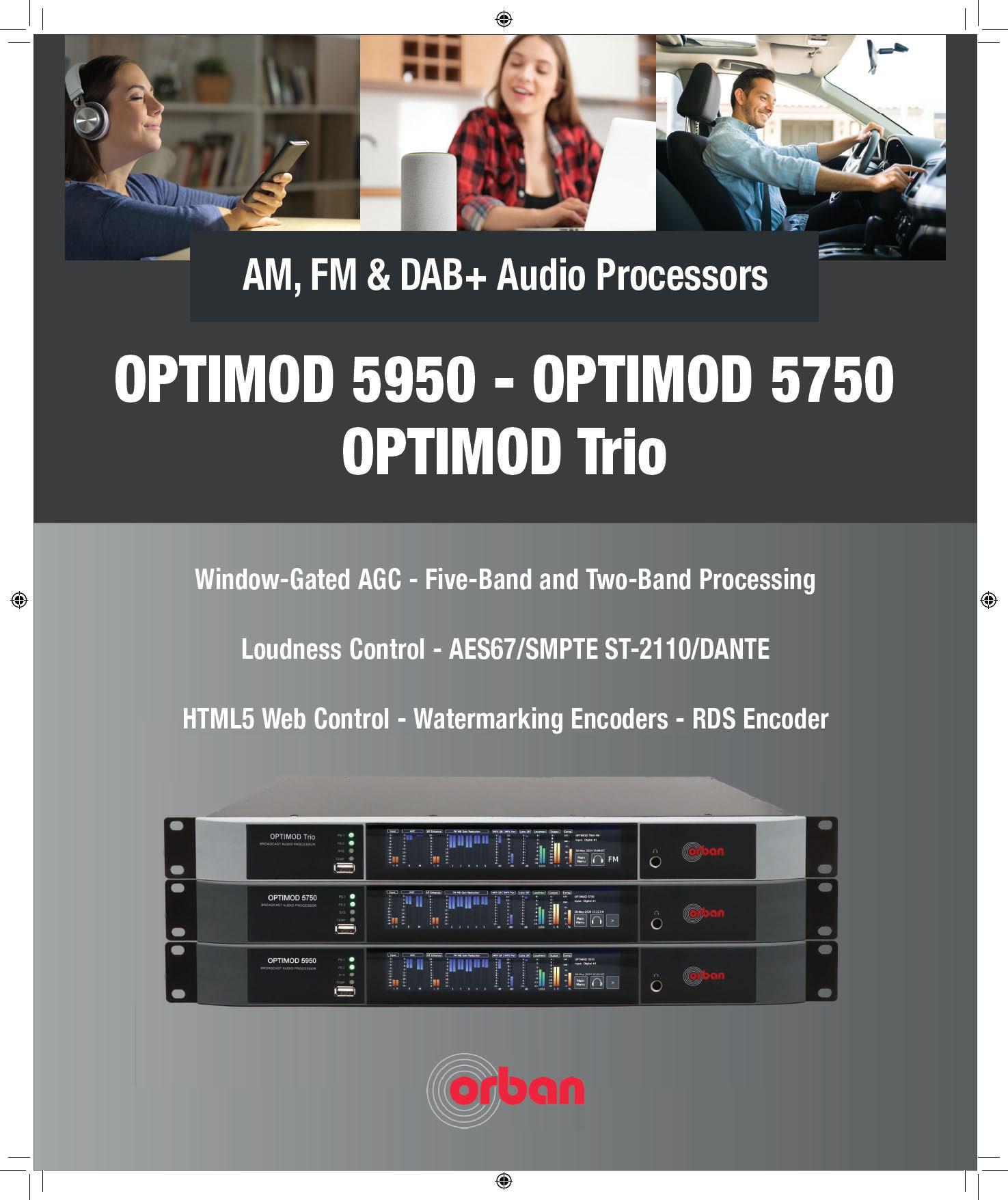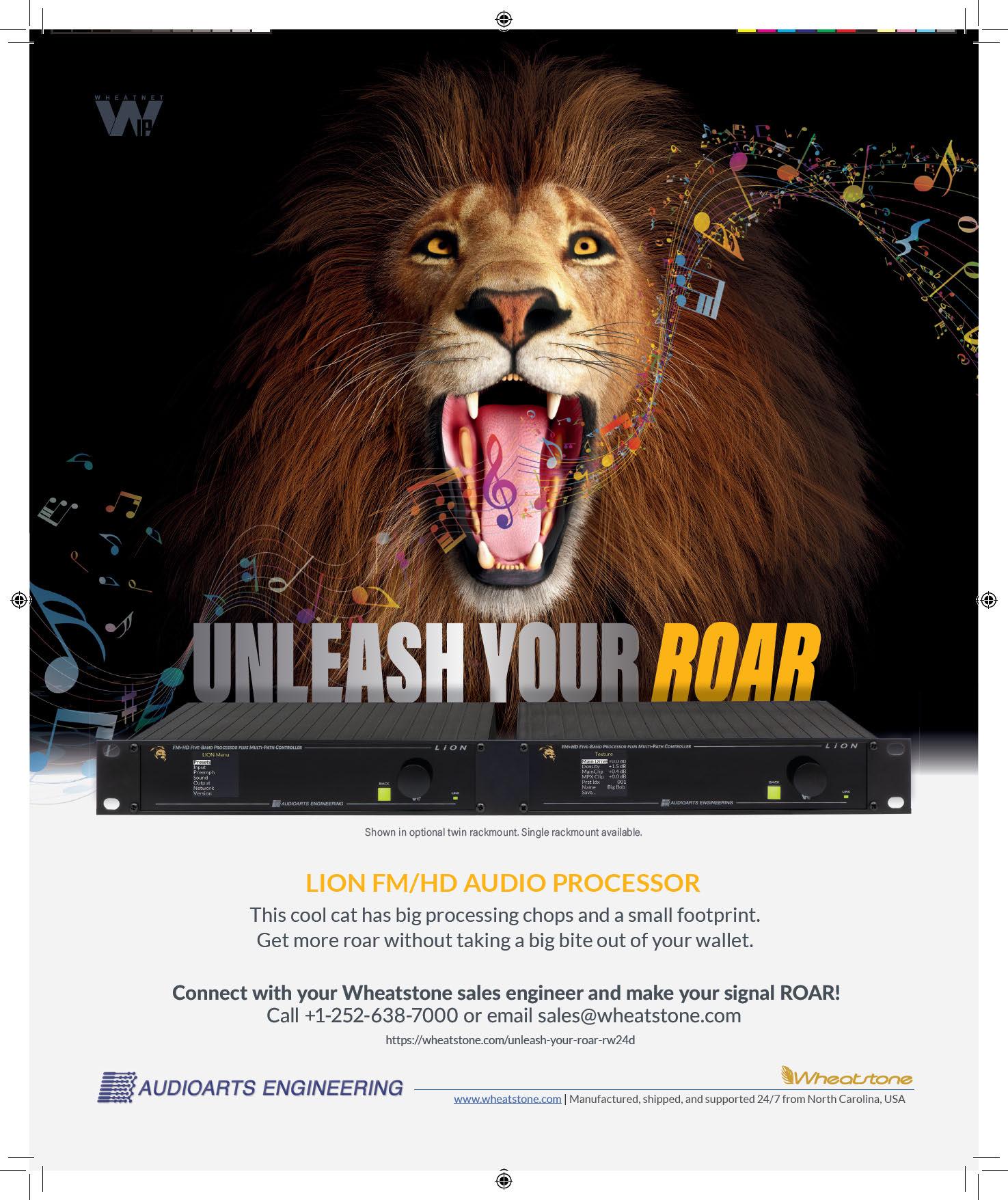Welcome to the June 19th, 2024 issue of Radio World







Welcome to the June 19th, 2024 issue of Radio World







Glass LXE is a multi-touch UI that operates as a standalone virtual console into the WheatNet-IP audio network, a complete IP audio ecosystem of consoles, talent stations, I/O units, accessories, and appliances.




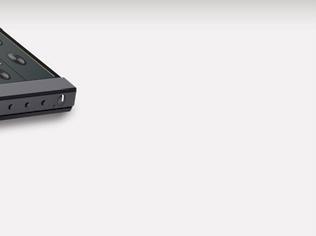

Experience the power of Wheatstone’s flagship LXE hardware console, now under your fingertips. Glass LXE is a multi-touch screen software interface, featuring familiar buttons, knobs, and multi-touch controls. Set EQ curves, filters, and more, just like you would on the LXE hardware console. Anywhere, anytime—Glass LXE brings the studio to you.
Connect with your Wheatstone sales engineer for all your WheatNet-IP AoIP network needs! Call (252) 638-7000 or email sales@wheatstone.com
https://wheatstone.com/glass-lxe-rw-2023d

Chicago Public Media settles into new studios serving WBEZ(FM) and the Chicago Sun-Times
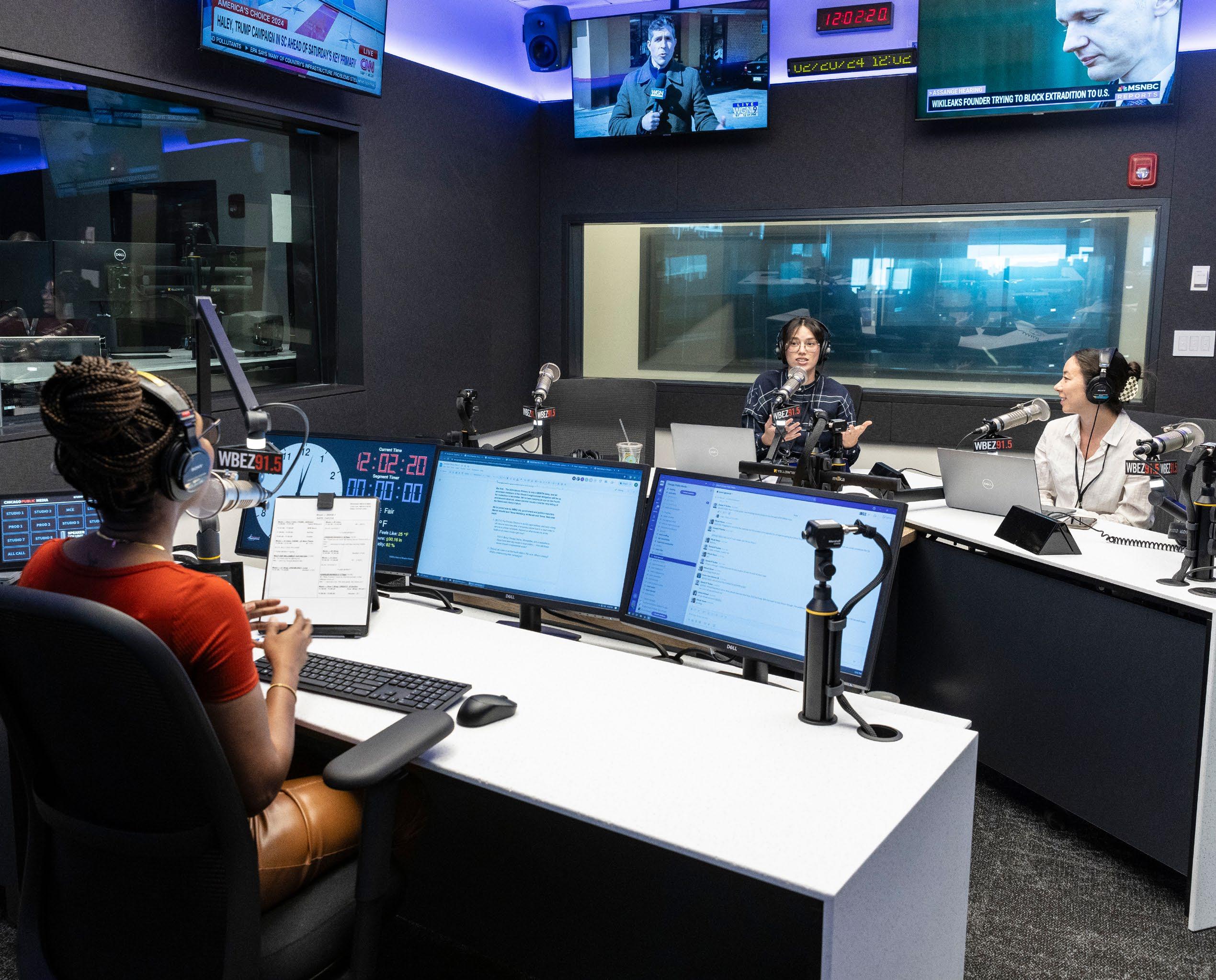
ZoneCasting prepares for takeoff
The first stations apply to do FM geotargeting. He just won’t stop
After 61 years in the biz, Lowell Homburger remains a believer in radio
College radio licenses matter Andy Gladding shares the findings of his doctoral dissertation.





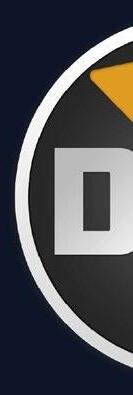



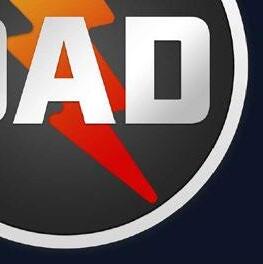
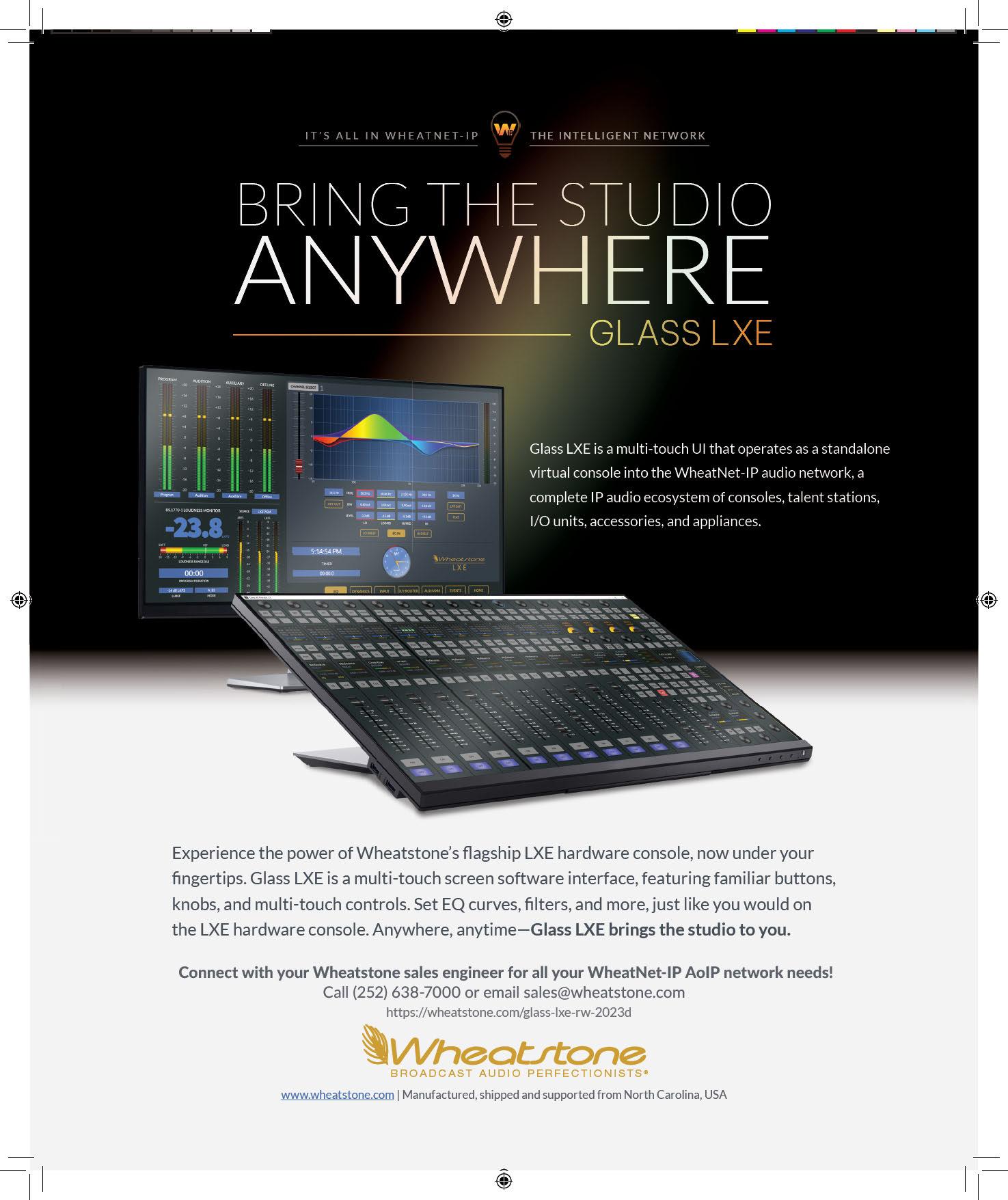
Vol. 48 No. 13 | June 19 2024 www.radioworld.com
FOLLOW US
www.twitter.com/radioworld_news
www.facebook.com/RadioWorldMagazine www.linkedin.com/company/radio-world-futureplc
CONTENT
Managing Director, Content & Editor in Chief Paul J. McLane, paul.mclane@futurenet.com, 845-414-6105
Assistant Editor & SmartBrief Editor Elle Kehres, elle.kehres@futurenet.com
Technical Advisors W.C. “Cris” Alexander, Thomas R. McGinley, Doug Irwin
Contributors: David Bialik, John Bisset, Edwin Bukont, James Careless, Ken Deutsch, Mark Durenberger, Charles Fitch, Donna Halper, Alan Jurison, Paul Kaminski, John Kean, Nick Langan, Larry Langford, Mark Lapidus, Michael LeClair, Frank McCoy, Jim Peck, Mark Persons, Stephen M. Poole, James O’Neal, T. Carter Ross, John Schneider, Gregg Skall, Dan Slentz, Dennis Sloatman, Randy Stine, Tom Vernon, Jennifer Waits, Steve Walker, Chris Wygal
Production Manager Nicole Schilling
Senior Design Director Lisa McIntosh
Senior Art Editor Will Shum
ADVERTISING SALES
Senior Business Director & Publisher, Radio World John Casey, john.casey@futurenet.com, 845-678-3839
Publisher, Radio World International Raffaella Calabrese, raffaella.calabrese@futurenet.com, +39-320-891-1938
SUBSCRIBER CUSTOMER SERVICE
To subscribe, change your address, or check on your current account status, go to www.radioworld.com and click on Subscribe, email futureplc@computerfulfillment.com, call 888-266-5828, or write P.O. Box 1051, Lowell, MA 01853.
LICENSING/REPRINTS/PERMISSIONS
Radio World is available for licensing. Contact the Licensing team to discuss partnership opportunities. Head of Print Licensing Rachel Shaw licensing@futurenet.com
MANAGEMENT
SVP, MD, B2B Amanda Darman-Allen
VP, Global Head of Content, B2B Carmel King MD, Content, Broadcast Tech Paul J. McLane
VP, Head of US Sales, B2B Tom Sikes
Managing VP of Sales, B2B Tech Adam Goldstein VP, Global Head of Strategy & Ops, B2B Allison Markert, VP, Product & Marketing, B2B Scott Lowe Head of Production US & UK Mark Constance Head of Design, B2B Nicole Cobban FUTURE US, INC.
Future US LLC, 130 West 42nd Street, 7th Floor, New York, NY 10036

All contents ©Future US, Inc. or published under licence. All r part of this magazine may be used, stored, transmitted or reproduced in any way without the prior written permission of the publisher. Future Publishing Limited (company number 02008885) is registered in England and Registered office: Quay House, The Ambury, Bath BA1 1UA. All in contained in this publication is for information only and is, as far as we are aware, correct at the time of going to press. Future cannot accept any responsibility for errors or inaccuracies in such information. You are advised to contact manufacturers and retailers directly with regard to the price of products/services referred to in this publication. Apps and websites mentioned in are not under our control. We are not responsible for their contents or any other changes or updates to them. This magazine is fully independent and not affiliated in any way with the companies mentioned herein.
If you submit material to us, you warrant that you own the material and/ or have the necessary rights/permissions to supply the material and you automatically grant Future and its licensees a licence to publish your submission in whole or in part in any/all issues and/or editions of publications, in any format published worldwide and on associated websites, social media channels and associated products. Any material you submit is se own risk and, although every care is taken, neither Future n or its employees, agents, subcontractors or licensees shall be liable for loss or damage. We assume all unsolicited material is for publication unless otherwise stated, and reserve the right to edit, amend, adapt all submissions.
“

Paul
McLane Editor in Chief
nyone who has ever used the ‘World Radio Television Handbook’ calls it the ‘bible of broadcasting’ for good reason: It has all the information that somebody who is interested in radio really needs.”
Günter Lorenz is the CEO of Radio Data Center, which publishes the handbook, so you might forgive him for being enthusiastic on this topic. But in my experience, he’s right.
As our contributor James Careless reported recently at radioworld.com, Radio Data Center, based in Germany, took on the publication of the handbook starting last year, after publisher Nicholas Hardyman ceased doing so.
“With its comprehensive listing of radio/television stations worldwide,
3 From the Editor
5 U.S. radio begins to explore FM geotargeting
10 PPM finds its way into audio processing FEATURES Rule the transmitter roost with a chicken coop Summer of Products
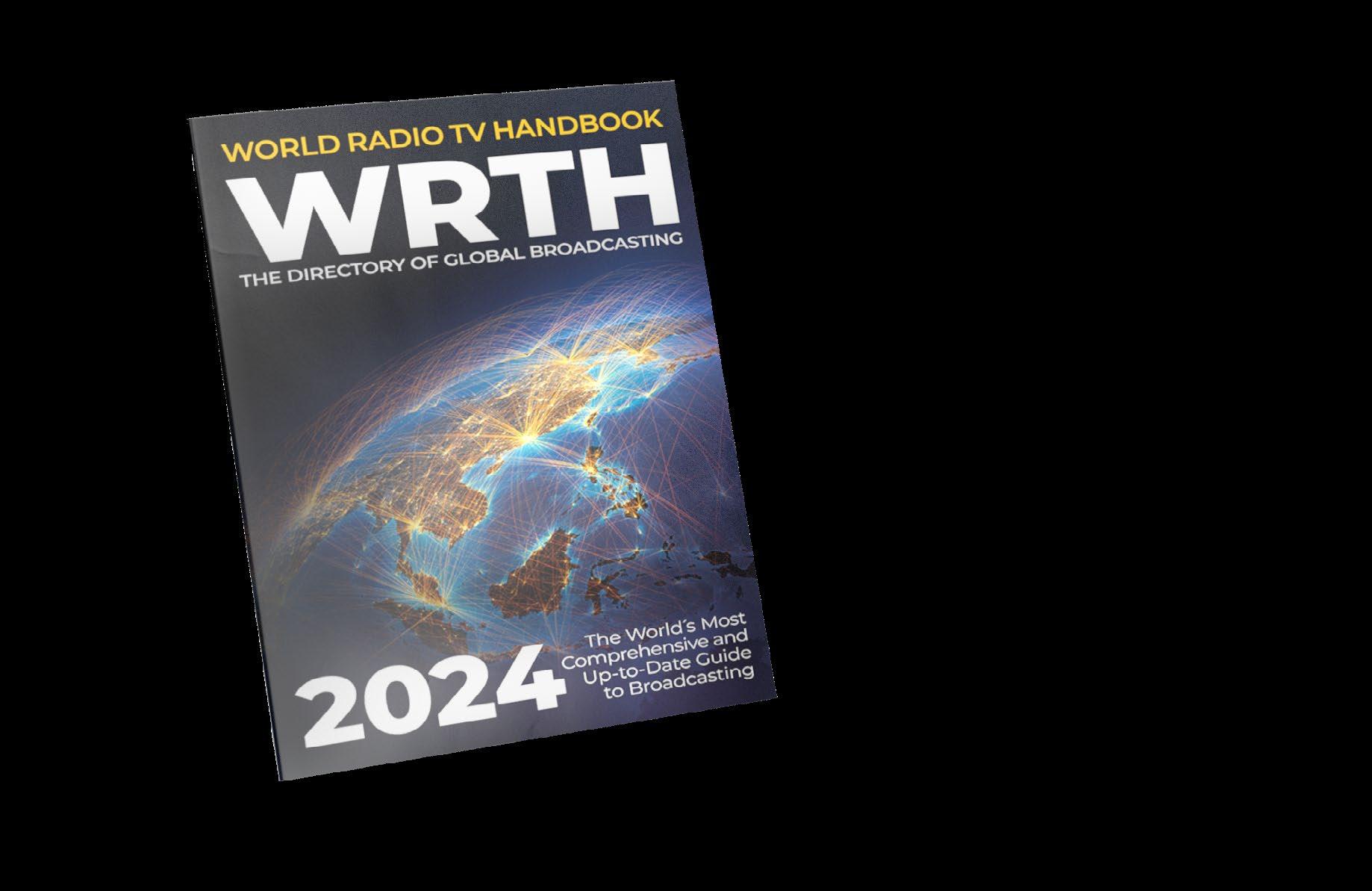
Radio World (ISSN: 0274-8541) is published bi-weekly by Future US, Inc., 130 West 42nd Street, 7th Floor, New York, NY 10036. Phone: (978) 667-0352. Periodicals postage rates are paid at New York, NY and additional mailing offices. POSTMASTER: Send address changes to Radio World, PO Box 1051, Lowell, MA 01853.
Please recycle. We are committed to only using magazine paper which is derived from responsibly managed, certified forestry and chlorine-free manufacture. The paper in this magazine was sourced and produced from sustainable managed forests, conforming to strict environmental and socioeconomic standards. The manufacturing paper mill and printer hold full FSC and PEFC certification and accreditation.
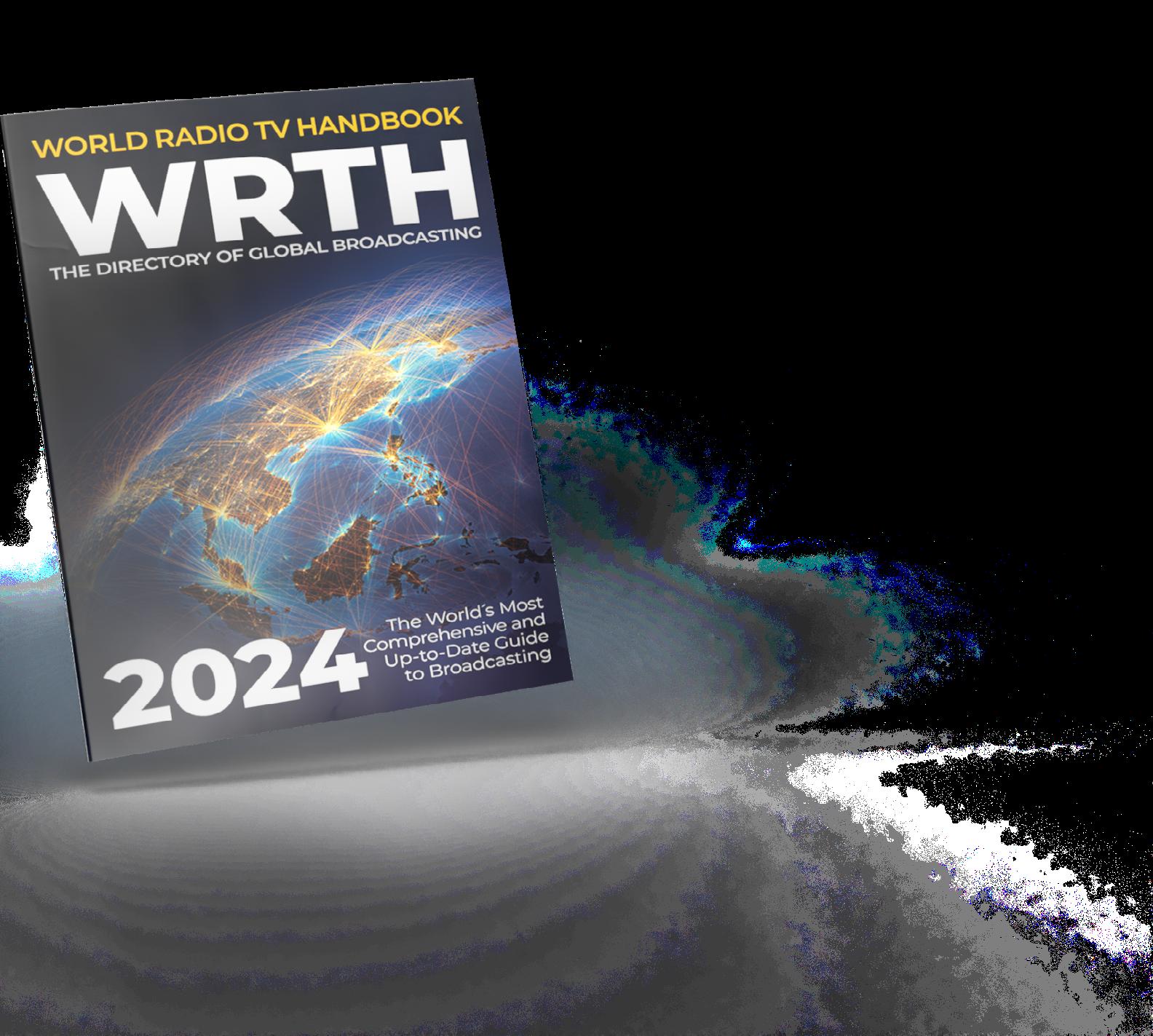
Chicago Public Media opens new studios on Navy Pier
QR codes: An overnight success that took decades
For six decades, Lowell Homburger has been part of radio
OPINION College FM radio licenses matter On the cover In the new WBEZ studios, “Reset” host Sasha Ann Simons works with reporters Mariah Woelfel and Tessa Weinberg.
3
Günter Lorenz
back,” Lorenz told James. “All of the listings are generated from our database, which is constantly updated.”
The company works to ensure the WRTH’s accuracy, aware that shortwave radio broadcasters change their frequencies to take advantage of changing RF propagation conditions.
He said the 2024 edition includes improvements based on feedback from readers after publication of the 77th edition last year.
I learned from our article that Radio Data Center also offers the new WRTH WebApp, an online version of the content that the company can keep current easily.
Günter Lorenz — a database specialist and lifelong radio enthusiast with expertise in RDS, DAB, wave propagation and reception technology — told RW that the response from readers has been very positive.
“There was a delay between Nicholas announcing that he was stopping the WRTH and us taking it over, so some people lost hope and started looking for other sources. But when we came out with the announcement that the WRTH would keep going, a lot of people were really, really happy.”
You can learn about Radio Data Center at https:// radiodatacenter.net/en/. The handbook is available at https:// shop.radiodatacenter.net/rdc-shop/
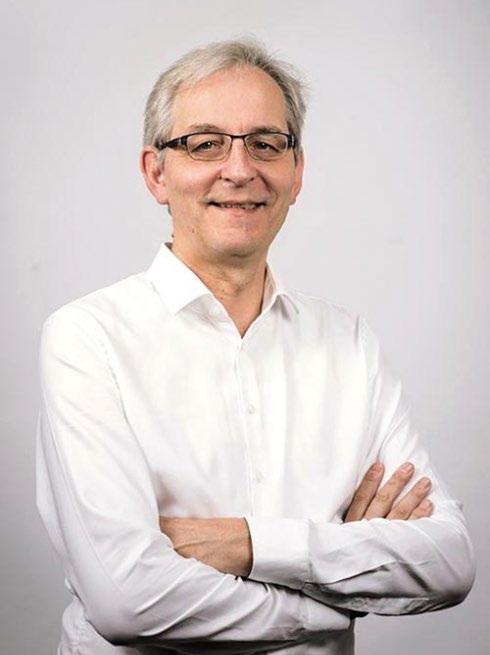
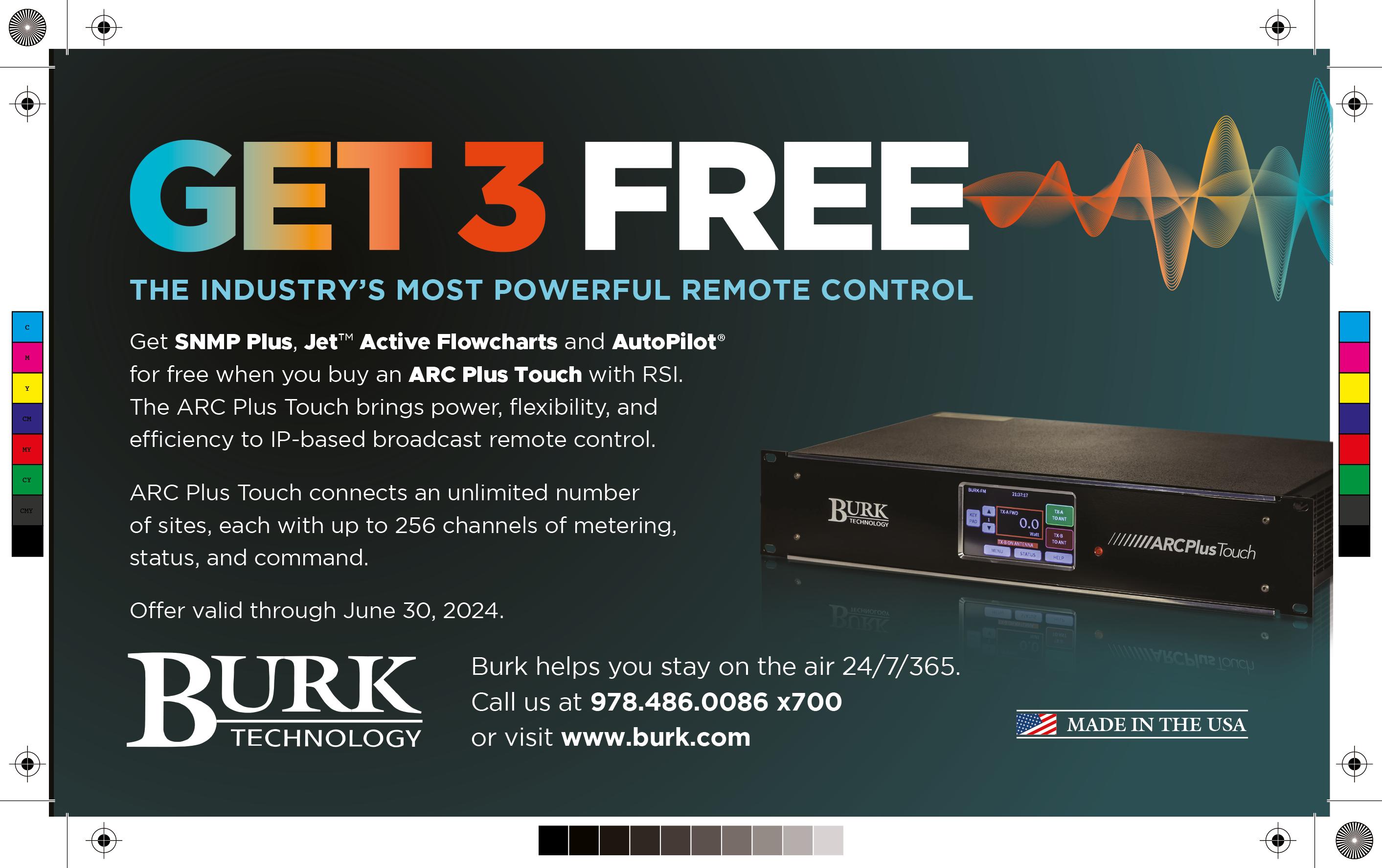

Writer Randy J. Stine
The FCC ’s decision to allow program origination on FM boosters for a few minutes of geotargeting every hour could have a significant impact on programming and sales strategies for some broadcasters, according to industry watchers.
The commission has yet to develop the final rules, but for now broadcasters can deploy the strategy under one-year, renewable experimental authorizations.
The technology’s proponent, GeoBroadcast Solutions, says FM stations can use its ZoneCasting system to deliver highly targeted news, weather, traffic, advertising and public service information.
In June, GBS announced that four broadcasters had filed applications.
WRBJ-FM in Jackson, Miss., is an urban format station owned by Roberts Broadcasting that participated in testing the technology. “The station will utilize ZoneCasting to offer affordable advertising rates to smaller, minority-owned businesses and provide targeted content for Jackson State University,” GBS wrote.
KLCY(FM) in Vernal, Utah, a country station owned by Ashley Communications, will use ZoneCasting to deliver
content specific to a large Ute Indian Tribe reservation, “supported by strong community interest and funding from Ute leadership.”
KADD(FM) in Las Vegas is operated by Radio Activo. It will target high-density Hispanic areas in Las Vegas and Washington County, Utah.
KKFT(FM) and KRFN(FM) in Reno, Nev., owned by Evans Broadcast, “will create targeted content zones for Carson City and Lake Tahoe, focusing on the distinct needs of Nevada’s capital and the vacation destination community.”
Comments filed earlier in the FCC’s proceedings provide insight into how other broadcasters may use the technology.
Core Radio Group operates urban format stations in several markets, including the “Streetz” brand in Atlanta. It told the FCC it could better serve black communities through weather, traffic and civic information if it used the system.
“Geotargeting would also enable hyper-local advertising over the FM radio band … for black entrepreneurs running

Above KLCY(FM) plans to use geotargeting to air content specific to a nearby Ute Indian Tribe reservation.
small businesses that want to reach listeners who may be geographically clustered inside a much broader FM radio market. Geotargeting enables the radio station to serve those listeners at an affordable price for the advertiser,” Core wrote.
The company said that “every other communications platform” other than radio “can and does geo-target.”
Core Radio Group didn’t return an email seeking comment on its plans to implement geotargeting.
Steve Anderson, general manager of KAFF(FM) in Flagstaff, Ariz., hopes his station can someday use
listening experience, we may have something here,” Anderson said.
“We believe we could fill in holes where our signal is not as strong with the boosters and that would also include the Navajo Indian Reservation. With the geotargeting nature of the technology we can also tailor specific client and station messages to each area.”
Among the organizations expressing concern about geotargeting to the FCC was the New Jersey Broadcasters Association. It told the commission in its comments that it fears that small New Jersey stations, pinched between the major out-of-state markets New York City and Philadelphia, could be at a competitive disadvantage.
“Geotargeting would allow New York’s, as well as other metros like Philadelphia and Allentown, etc., Class B radio stations that broadcast signals over wide swaths of the Garden State’s geography … to sell locally targeted advertising in markets while denying the Class A stations in those markets to reciprocate in New York or other such cities,” NJBA told the FCC.
The NJBA has said it believes this type of “wild west” entry into neighborhoods is a threat to the majority of New Jersey’s lower-powered, fully licensed stations.
Some large broadcasters, including iHeartMedia and Audacy, also challenged the technical soundness of the technology in their prior comments. Both companies
“It’s clearly in the licensee’s best interest to minimize interference, and sometimes the best way to do this is by increasing the number of booster nodes to accomplish that.
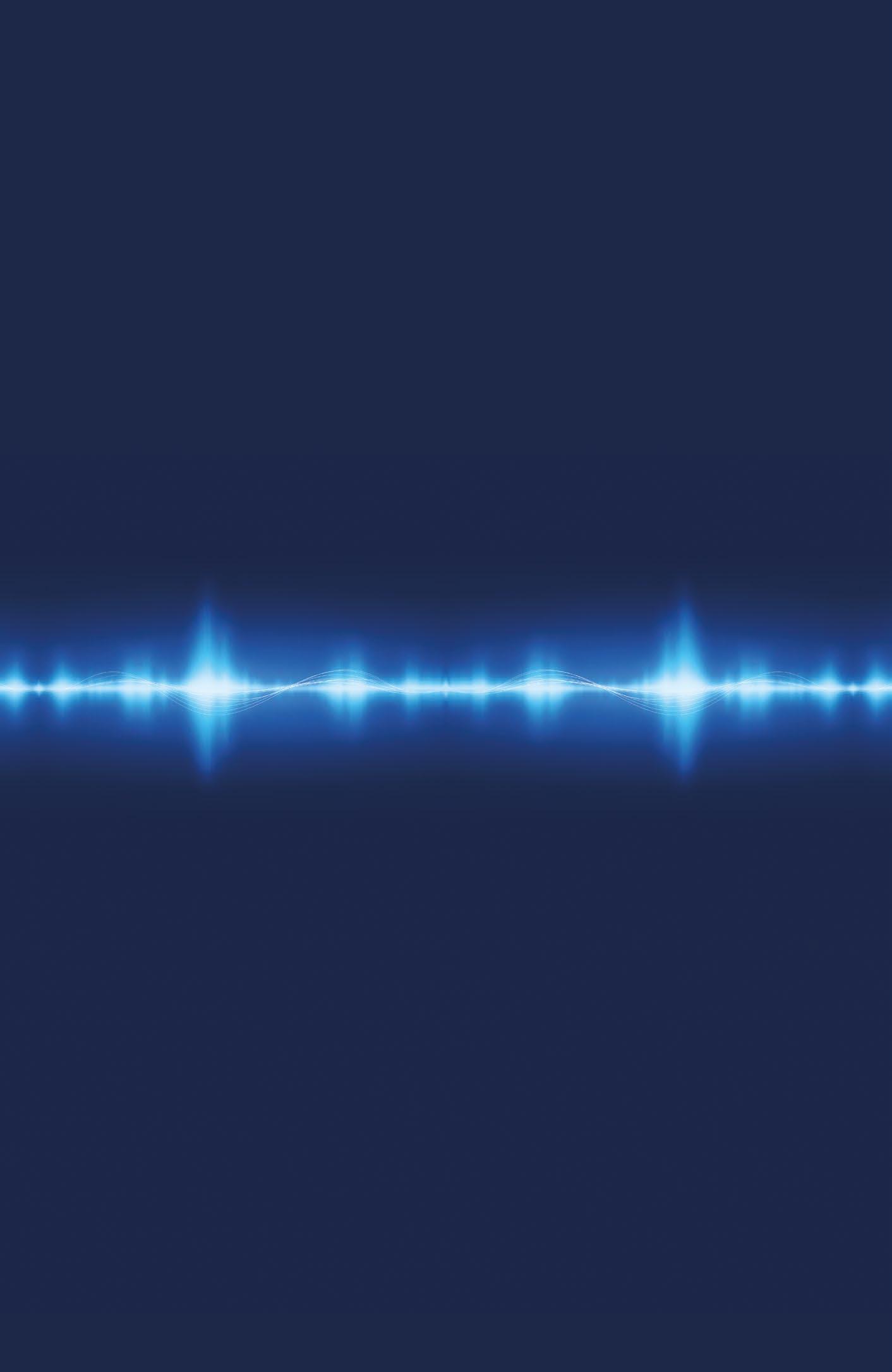
geotargeting booster technology to target the Native American population in its listening areas.
Flagstaff has a population of around 79,000, and Native Americans are the second-largest demographic, according to KAFF. That includes members of the Navajo, Apache, Yavapai and Hopi tribes.
Even though KAFF has “no active plans” to deploy the technology, Anderson believes the ability to geotarget content will prove to be an important asset for
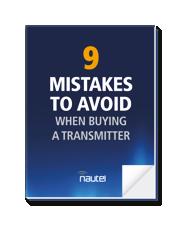
“Geotargeting is a very successful way to market digitally, so we believe the same benefit could be achieved with terrestrial radio. We are currently gathering more knowledge about the technology and the affect the boosters may have on everyday listening in our market. If it allows for a seamless
declined to comment when asked if they have any plans to explore geotargeting.
The FCC will allow stations to apply for up to 25 boosters, though most deployments are expected to involve far fewer.
Bert Goldman, chief engineering consultant to GBS, said, “For instance, to cover the community of Lake Tahoe, KKFT will use one ‘border’ node consisting of two licensed boosters, one of which will be designated as a Program Origination Booster. This is a good example since the South Lake Tahoe community, which is mostly in California, is very different from the Reno, Nevada community.
“Similarly, KADD, which currently has limited coverage in St. George, Utah, and primarily serves Las Vegas, will now have great coverage to more than 100,000 people in St. George with only one border node and two booster nodes.”
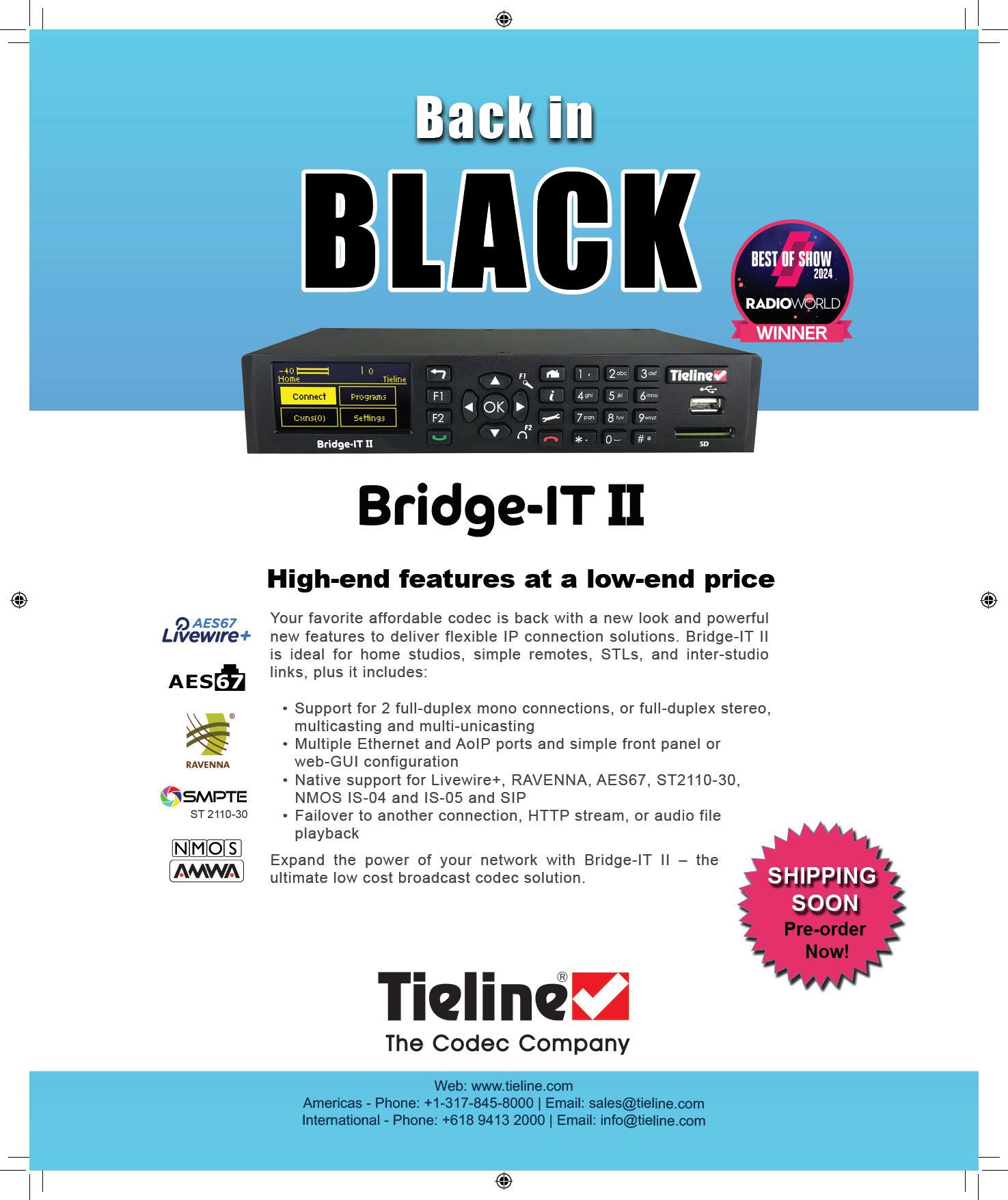
Francois Gauthier, president and principal engineer of Octave Communications, expects stations with marginal reception in downtown metropolitan areas might have the most to gain from geotargeting.
“Early deployment has demonstrated a direct correlation with their PPM decoding in those markets, thus driving the revenues directly. Early adopters will be winners in this scenario as once this fact will be known, many will do the same deployment,” he said.
A filing from Alpha Media estimated that a broadcaster operating four boosters would incur initial costs of about $51,000 and annual costs of about $59,000, which Alpha thought would be beyond the reach of small and midsized stations.
But Goldman said that the costs are coming down quickly. “Prices for low-power transmitters like we use for boosters (typically 1 kW or less) have dropped significantly, especially for analog, in the last year.
Bert Goldman, chief engineering consultant for GeoBroadcast Solutions, answered questions from Radio World about ZoneCasting and the technical design of the system.
What might the upper end for the number of boosters per station be?
Bert Goldman: A zone typically comprises several boosters. To design a zone, one usually has a “border” node as one enters the zone, a couple of boosters within the zone, and another border node as one leaves the zoned area.
There are two licensed boosters to comprise a single border node: one booster that always mirrors the main programming and the other pointing 180 degrees in the opposite direction of the first that carries the
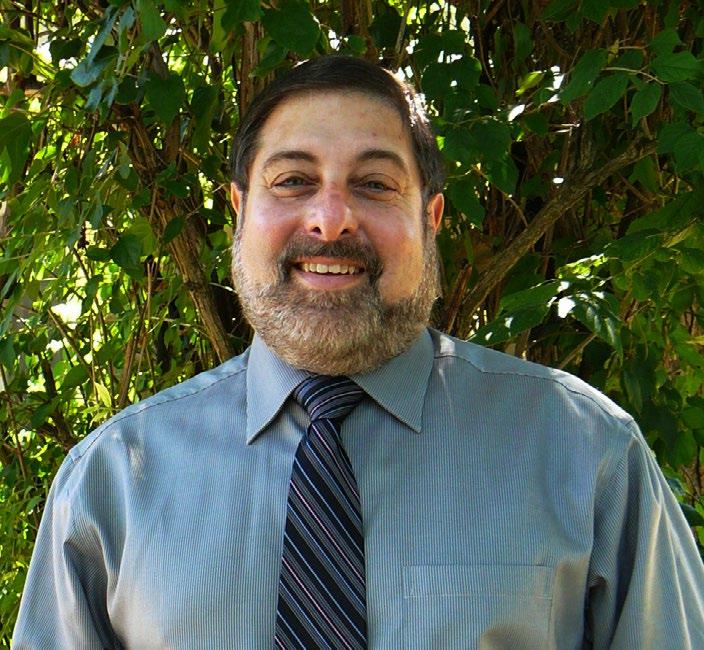
Additionally, Geo is looking at a revenue share business model that could reduce costs to the station significantly, and in some locations where multiple stations can collocate, costs can be further reduced.”
Tim Anderson, principal engineer at TBA Communications, believes broadcasters will be eager to move forward. “I expect we will see many of the proponent broadcasters deploy zone boosters where there are specific market opportunities,” he said.
“If the early adopters prove workable business models that justify the investment while allaying interference concerns, when the commission releases its final rules, I foresee many more broadcasters adopting the technology.”
LPFMs, Class A and Class B1 facilities will have limited geotargeting opportunities due to their smaller coverage areas, Anderson said. “For full Class Bs and the Cs, the opportunities grow exponentially with their larger coverage areas with potentially dozens of hyperlocal markets.”
zone programming during the three minutes an hour of split programming. So in the example above, one would have two border nodes and two booster nodes, for a total of six licensed boosters.
If there were multiple roads or entry points into a zone, additional border nodes might be required, so perhaps eight licensed boosters to define a zone wouldn’t be unheard of. And given some challenging terrains or in the case of a Class C station where one wanted more than one zone, the number could approach 25.
That seems like a lot and makes it easier to understand why NAB and others are worried about interference. Goldman: The point is that proper design with an adequate number of boosters ensures that there is no interference. This is worth emphasizing since some casual readers don’t grasp it. A broadcaster wants to use the right number of boosters — no more and no less — to give the audience the best listening experience.
Within the zone, one must include an adequate number of nodes to make sure that the D/U or desired-to-undesired ratio overcomes the main signal within the zone, and several border nodes may be necessary to ensure a crisp transition between the main and geotargeted areas.
Keep in mind that this is all taking place inside the protected contour of the primary station, so there’s no potential for interference with other broadcasters. It’s clearly in the licensee’s best interest to minimize interference, and sometimes the best way to do this is by increasing the number of booster nodes to accomplish that.
It may be an unusual circumstance, but as I noted above, if there were a Class C station serving a large area that had an interest in multiple zones to serve a diverse population, I can easily see that they could approach 25 separately licensed boosters, but every situation is different.
What are the challenges of running and managing such a system?
Goldman: From an operational standpoint, operating a ZoneCasting system is not much different from operating a MaxxCasting system or any synchronized booster, or for that matter any RF transmission system. Once set up properly with quality equipment, the system is quite stable and reliable.
We’ve found that the biggest challenge tends to be IP connectivity. All of our systems are designed to immediately shut off if there is any loss of connectivity or synchronization. We’ve found that having multiple IP circuits with stream splicing reduces that issue effectively to zero.
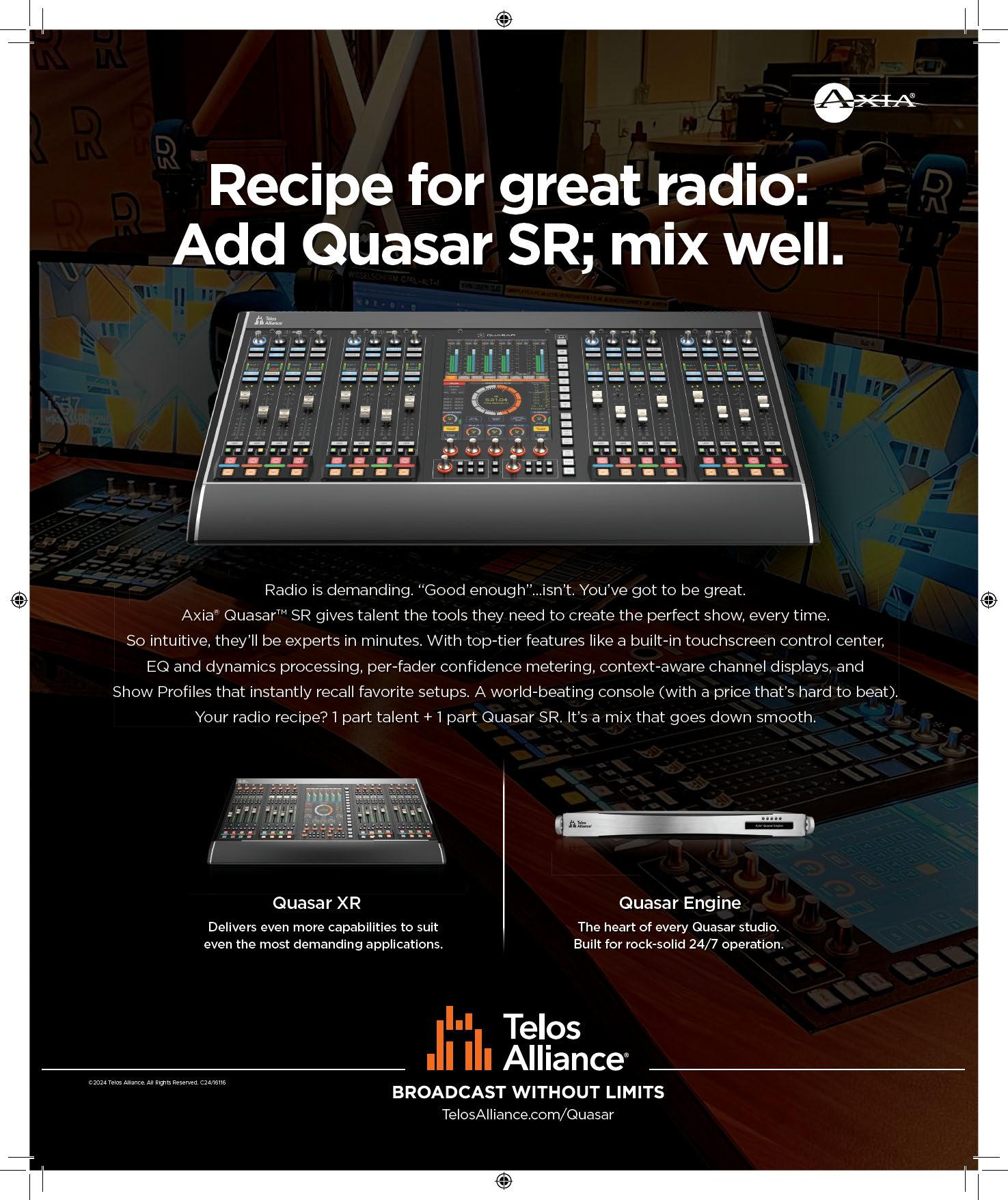
Writer Paul McLane Editor in Chief
Thanks
to software, Nielsen’s encoding algorithm no longer requires a separate box
Nielsen’s Audio Software Encoder decouples the company’s PPM encoding algorithm from the hardware encoder and instead makes it available for integration into thirdparty broadcasting equipment. When the software is incorporated into a station’s audio processing, it can add the enhanced CBET code to the audio stream.
Nick Mannion is director of product management at Nielsen; he has responsibility for its audio measurement portfolio including the Portable People Meter and diary collection systems.
What is Nielsen’s interest in the software-based air chain?
Nick Mannion: First some background. Every station included in PPM measurement gets an encoder that places a watermark in the audio played over the air. Then we recruit a representative sample of panelists who carry around PPM, like the one I’m wearing here on my wrist. It picks up the code, logs it and sends the data back to
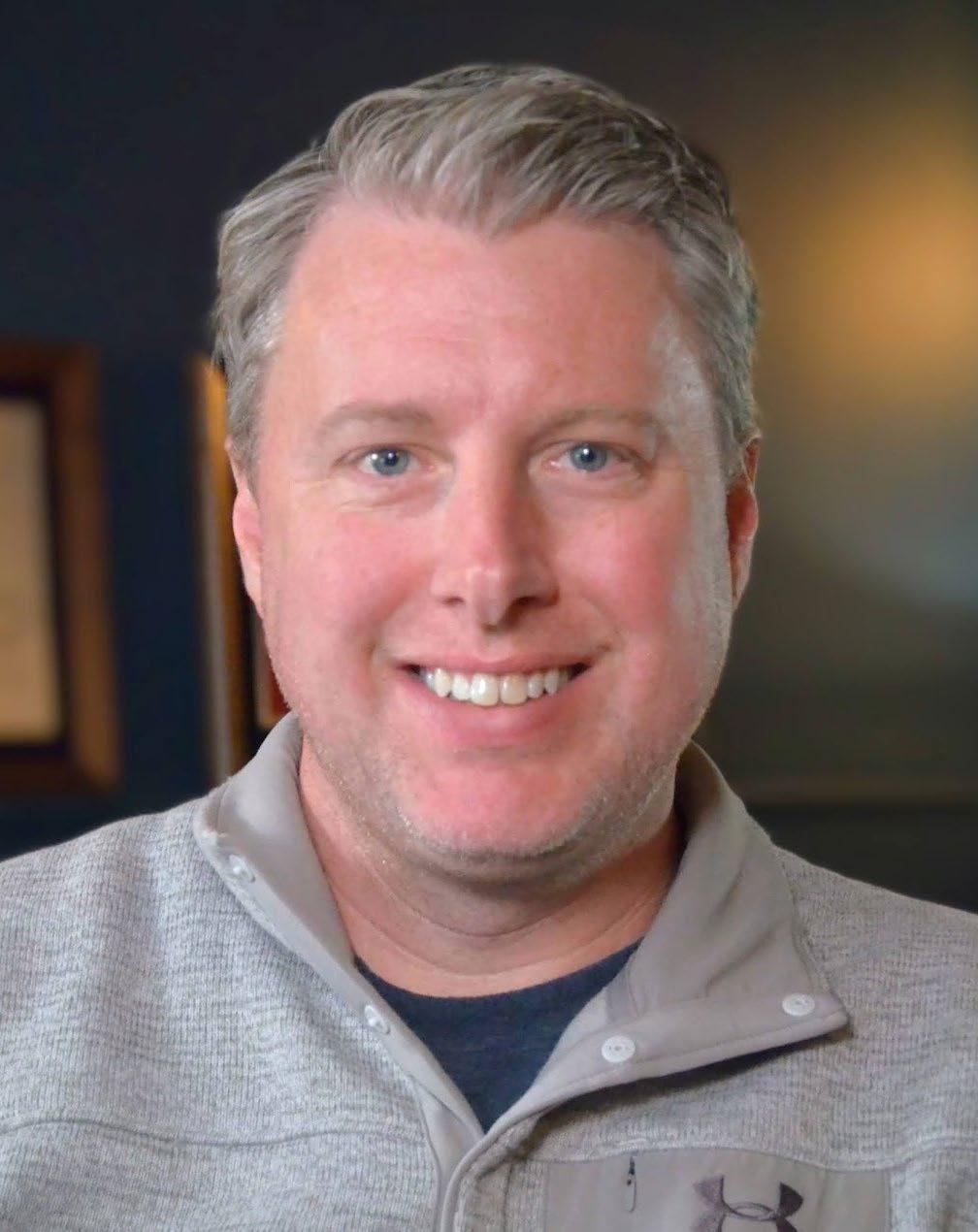
Nielsen, where it’s tabulated and then projected back out to the population.
Typically, watermarking at the broadcast facility has been done by a piece of hardware that Nielsen — and Arbitron before it — provided to the stations. But working with the NAB Radio Technology Committee and its PPM subcommittee, led by Jason Ornellas of Bonneville, we developed a software encoder that takes the brain out of the hardware and makes it available in a software development kit for any vendor to integrate into their product.
At Nielsen, we’re agnostic on the question of virtualization. Our goal is to measure everybody in PPM markets equally, whether they are virtualized or condense their hardware onto an on-prem server. We need to make sure we’re providing solutions so that they can be measured with that PPM watermark.
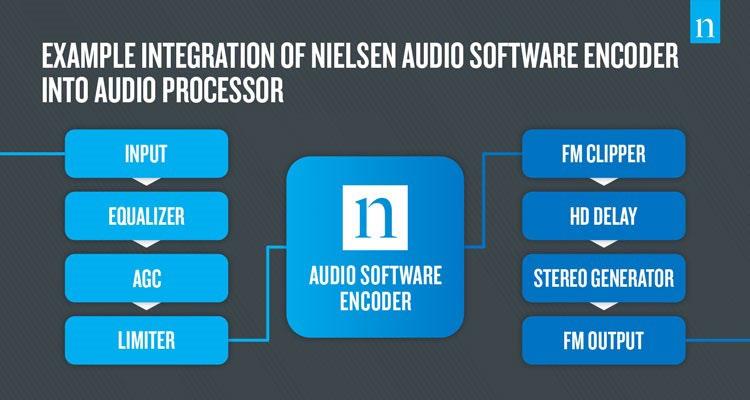
The software kit is available to any technology company that wants to integrate it in their product?
Mannion: Essentially yes, with a little bit of paperwork and NDAs. We now have 18 certified integrations including Orban, Omnia and Wheatstone. We have focused on audio processors because PPM typically sits in an air chain near the audio processor. On our engineering portal, stations can see which products are certified for Nielsen PPM encoding.
How does one get certified?
Mannion: A company requests our SDK to integrate into their platform. Nielsen’s engineers work with them to understand what their product does. Then we develop extensive test criteria to make sure the PPM encoding coming out of the product is equivalent to what would come out of a hardware encoder, so that no station has an advantage or disadvantage. We develop a technical requirements document and hundreds of test cases — different ways you can set it up — and we make sure that you can’t, for instance, inadvertently route around the PPM encoding.
Only then do we give them a certification, a license to distribute the Nielsen Audio Software Encoder to radio stations.
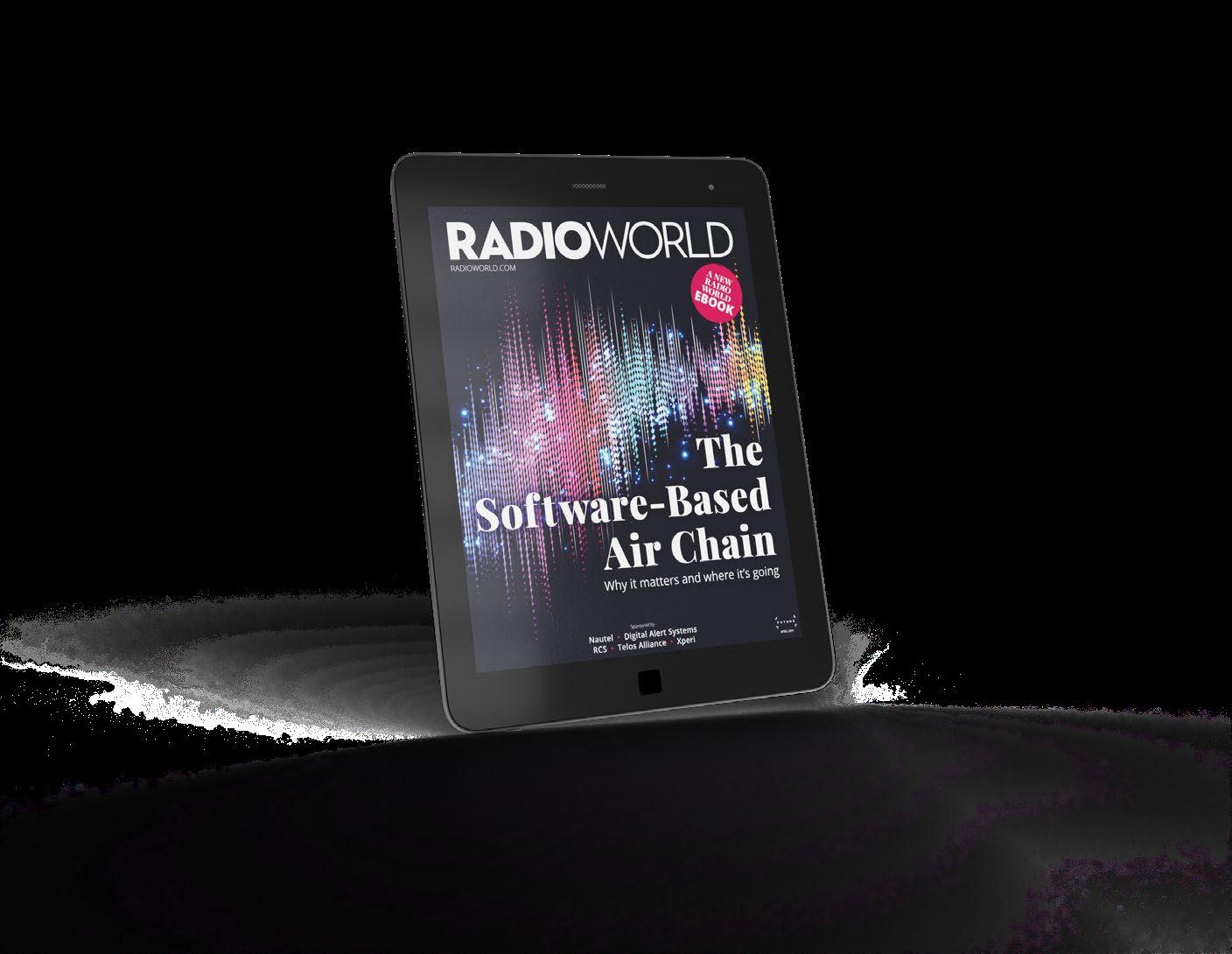
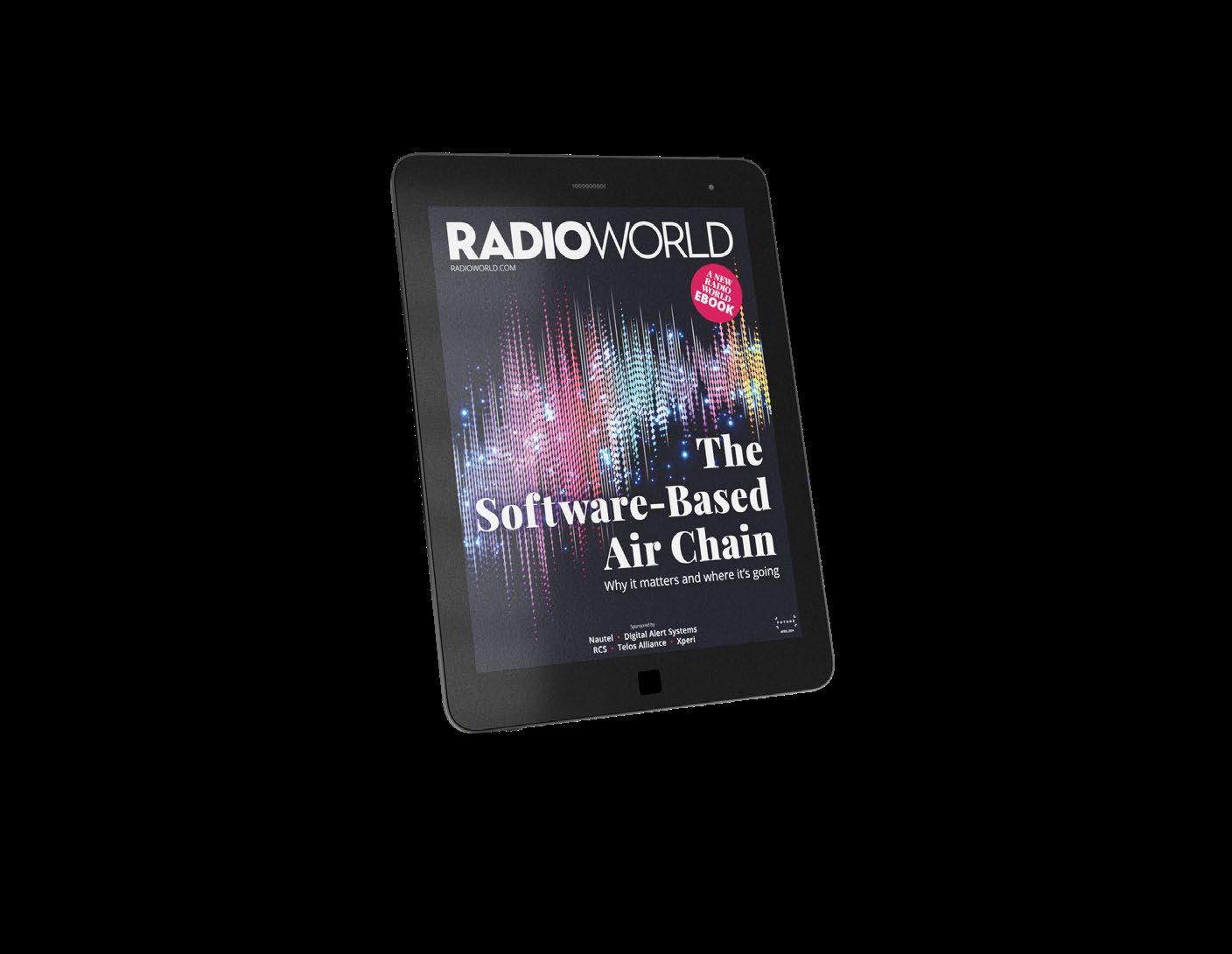
What are the most common concerns you hear from stations?
Mannion: This is something new; and when it comes to something like PPM encoding, which is critical for a station’s revenue, some groups or engineers are more hesitant to change than others.
Many prefer to start on their station streams. We measure streams separately from the AM and FM; and we
After our initial rollout, we also conducted field tests on AM, FM, HD and streams. That data is shared openly with the Media Ratings Council as part of our audit
Last but not least we have a multi-channel encoding monitor that allows stations to look at the performance of their watermark minute by minute across their day, so they can see they’re getting the same level of performance.
It’s in our best interest as well as the client’s to make sure they have a robust watermark.
How many stations have switched?
Around 500 streams in PPM markets have made the switch. Fewer so far on AMs and FMs. As I said, some are kicking the tires right now. But from my time spent at the NAB Show and meeting with various engineering leaders, as they look to virtualize their playout, this is where they are going. There are early adopters, and I think we’ll have a lot of fast followers who are just waiting and see how the early adopters fare before they jump in. That’s true not just in PPM but virtualization as a whole.
What is the potential universe of users? If you put one encoder on every AM signal, every FM
“We now have 18 certified integrations including Orban, Omnia & Wheatstone. We have focused on audio processors because PPM typically sits in an air chain near the audio processor. ”
see broadcasters getting comfortable with the software encoder by dipping their toes in first using their streams, before they jump to their big AMs and FMs.
Was it technically difficult to assure that the software iterations were as reliable as the hardware?
Mannion: Not really. We run a battery of tests anytime we make a change in PPM or encoding. At our office in Columbia, Md., we have a critical listening room where we run exhaustive tests across all types of formats, content, processing volumes, background noise, etc.
We make sure the SDK puts out a good robust watermark, then we go through that certification process, looking at an individual product’s integration, including the battery of more than 100 test cases.
signal and every HD multicast, plus every stream version of those signals, that must be 25,000 or 30,000 potential encoder points in the United States.
Mannion: Keep in mind that we measure with PPM in the top 48 markets. At the peak of the hardware encoder, we had about 13,000 pieces of hardware out at stations. Some stations have primary and backup encoders; some have a “doomsday path” to air, for emergencies. But as to the size of the potential universe, I’d say it is around 5,000 stations or streams.
Anything else we should know?
Mannion: The readers of Radio World are the people who are thinking about virtualization and cloud. What I’d like them to know is that Nielsen has options for them today, and that we’re a willing partner to work with them on the future.
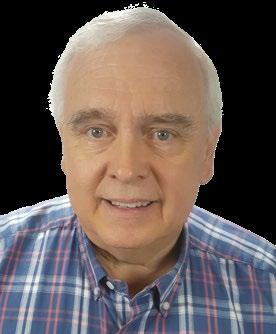
John Bisset
CPBE
The author is in his 34th year of writing Workbench. He handles western U.S. radio sales for the Telos Alliance and is a past recipient of the SBE’s Educator of the Year Award.
Don’t be chicken! Grab your keyboard and peck out a Workbench tip! Email: johnpbisset@ gmail.com.
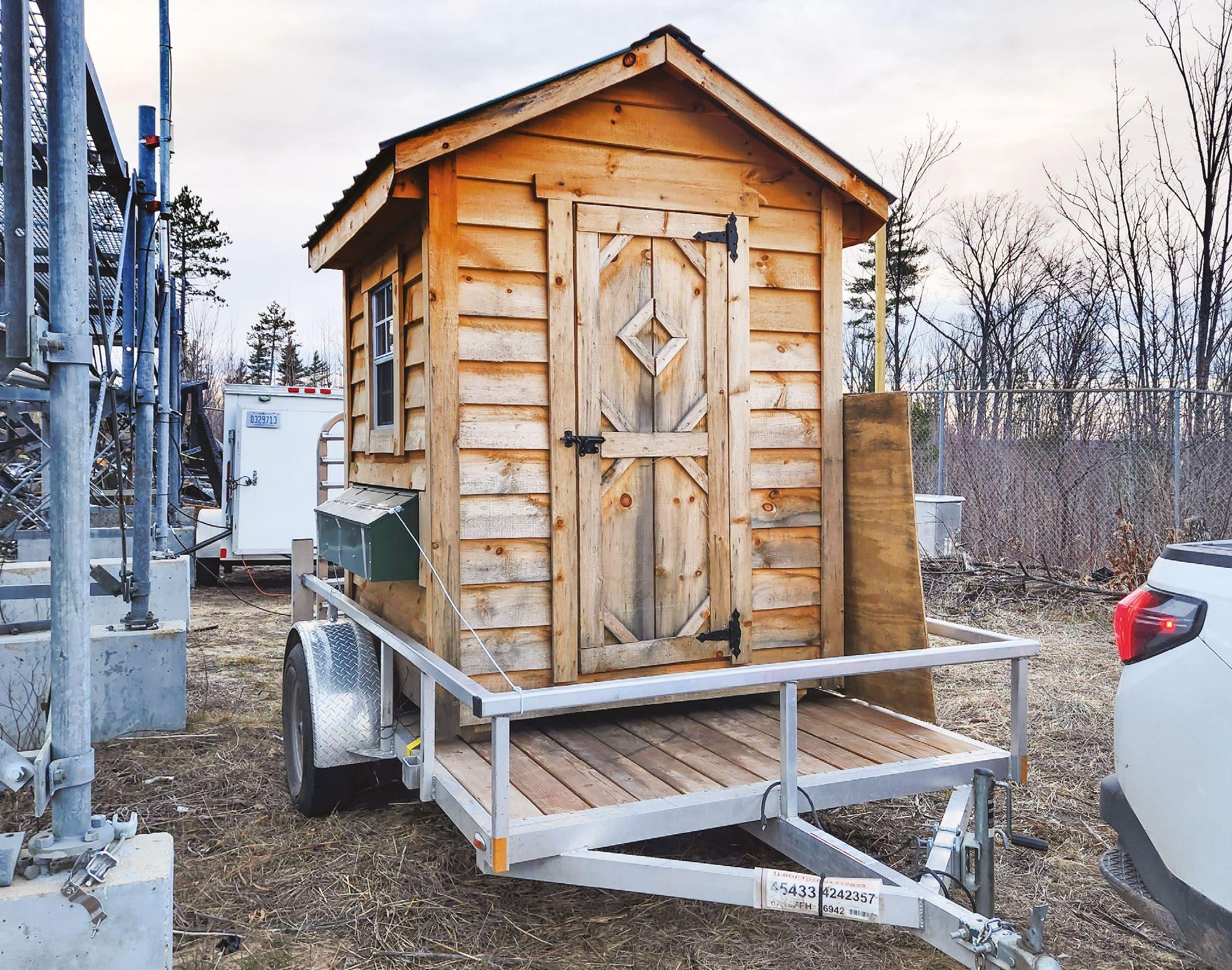
Del Reynolds plucked up his creativity for this emergency solution
In February, fire destroyed Central Michigan University’s TV transmitter building near Atlanta, Mich. Among the stations that lost facilities was 100 kW WPHN(FM), licensed to Northern Christian Radio.
WPHN engineer Del Reynolds came up with the temporary transmitter building that you can see in the
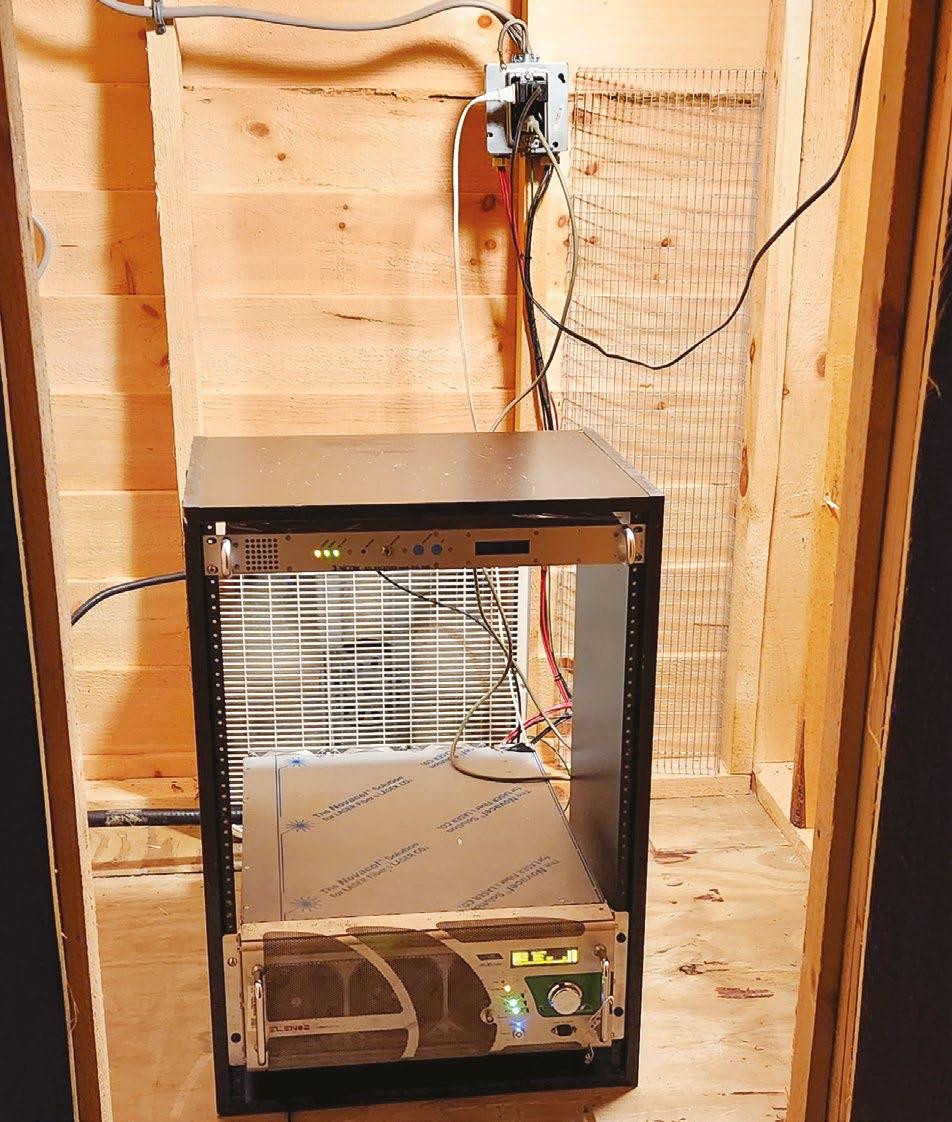
photo, perched on a trailer at the tower site. What looks like an outhouse is in face a chicken coop! Memories of the Beverly Hillbillies may come to mind. But the inside is nice and clean. And cooling is important, even for a temporary solid-state transmitter. You can see the box fan in the second photo, and the third image shows a vent that Del added to the chicken coop.
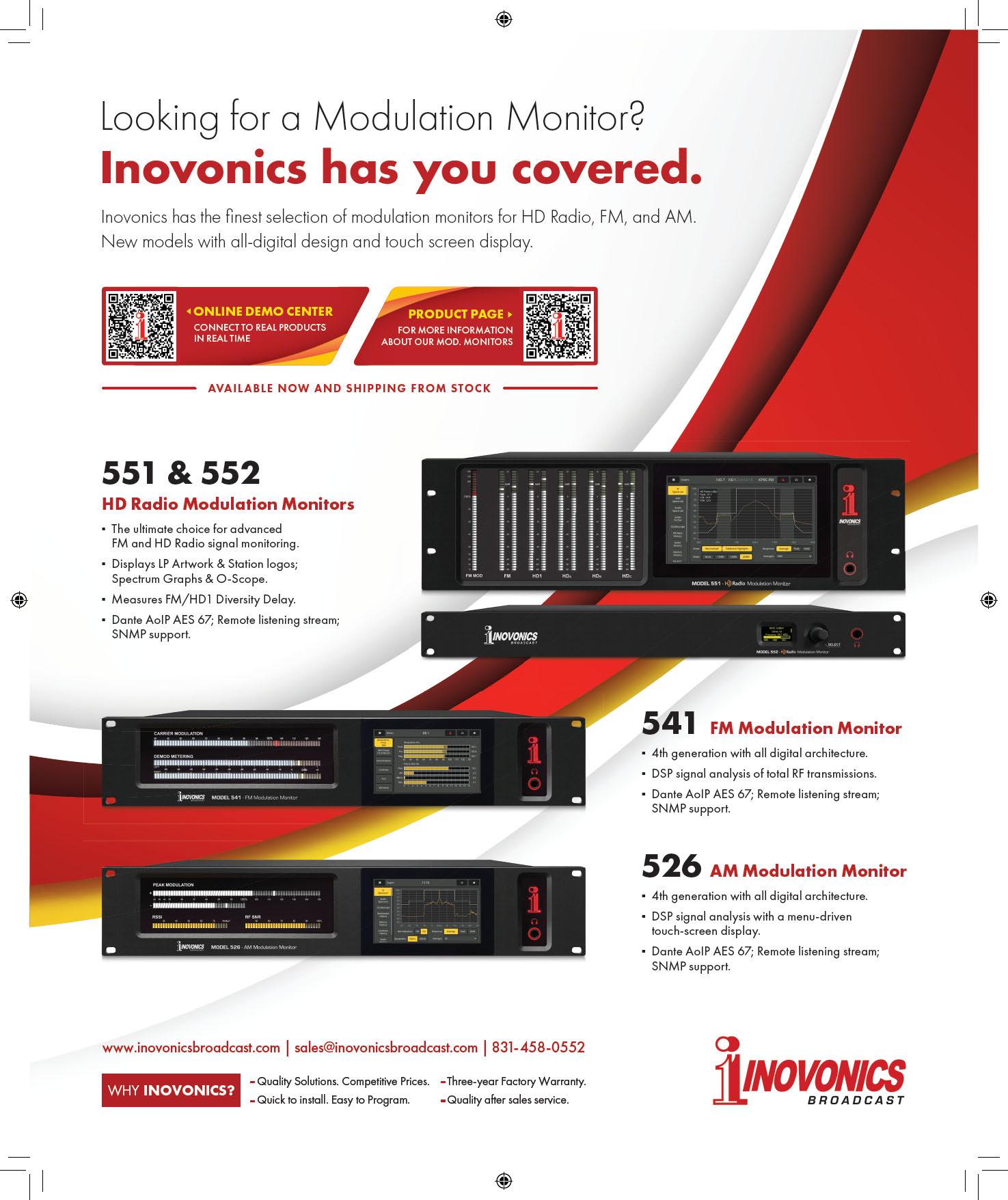
WPHN currently operates with engineering special temporary authority using a Nautel transmitter putting out 2.5 kW to achieve an ERP of 10 kW.
The photo is courtesy of Ed Trombley at consulting firm Munn-Reese in Coldwater, Mich. It’s a reminder that engineering consultants come across a lot of strange things.
Munn-Reese also publishes an occasional newsletter with topics of interest to broadcast engineers. You can find past issues at www.munn-reese.com
Don Elliot’s “emergency” battery tester that we described in the May 8 issue brought a number of positive reader comments.
One engineer wanted to know the type of wire used. You’ll recall that it was very rigid to withstand rolling around in a tool bag while maintaining its form. It turns out that Don used a paper clip! Simple is usually best.
That’s bull
We’ve shared mnemonics for remembering the resistor color code.
Bill Traue, principal of Bill Traue Technical Service LLC, was taught another by an early mentor who had served in the Navy: “Brown Bulls Raised On Young Grass Bring Very Good Wages.”
Returning to another recent topic, Paul Sagi reminds us that in a three-phase Wye system, if the phase currents are not balanced (equal) in each leg, there is current in the neutral. A neutral can overheat if the imbalance is too severe.
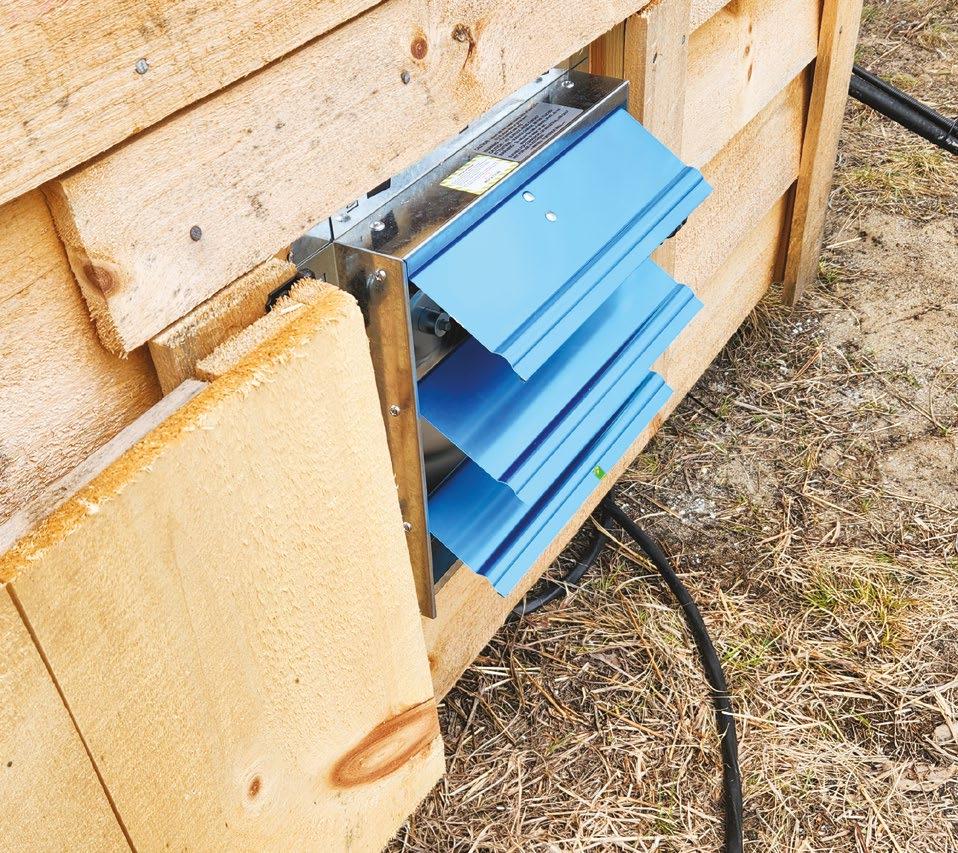
Measuring between phases, a good rule of thumb is for each phase to be within +5A of each other. By keeping the legs balanced, hot spots are eliminated, as all poles on the breaker or contactor heat evenly.
And continuing our discussion of tools to keep at hand: Paul says he carries a small mirror and tweezers in his toolbox, an old machinist’s habit.
He recalls a time when the air conditioner on his mother’s car stopped working. Her mechanic traced the problem to the air conditioning clutch, would cost $300 to repair. Using his small inspection mirror, Paul located the contacts on the back of the clutch coil. After removing the silicone RTV, Paul used a little solder to re-flow the connections. Continuity was restored and $300 was saved. Every day we use our skills to troubleshoot problems in broadcast gear. How great does it feel when we can apply those skills and avoid a costly repair bill?
Paul paints a humorous description of himself juggling mirror, solder, soldering iron and flashlight all at once to do the repair. The funniest part was that the mirror reversed directions; when he moved the soldering iron to the left, the image moved right.
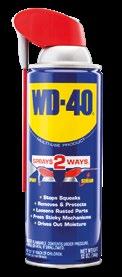
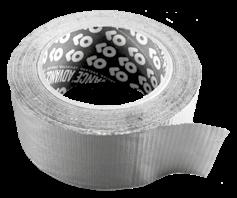
Over several months we’ve shared many great ideas about essential things to keep in your toolbox or tool bag. But Jim Davies at the University of Iowa shares the graphic at left, reminding us of two more that we have not mentioned. How would we ever get along without these?


ConTEXT by Broadcast Bionics is a dynamic graphics tool that allows broadcasters to add dynamic TV news-style graphics to live streams automatically and without additional TV production skills or staff.
“ConTEXT offers the simplicity of entirely automatic operation, seamlessly presenting live callers, remote guests in-vision, and dynamic RSS feeds on screen,” the company says.
“Alternatively, users have the flexibility to take manual control, to edit text, add videos or images and seamlessly switch on screen graphics in real time.”
It integrates with BionicStudio Director and vMix to create an enhancement to existing visualization workflows, enabling broadcasters to deliver polished live video streams without a dedicated graphics team.
“ConTEXT enables users to build their own browser-based interfaces for controlling vMix layouts and templates, as well as incorporating video from studio cameras and details of live callers from BionicStudio Talkshow.”
A range of configurable manual and automated data sources can dynamically generate graphics based on the station’s EPG, RSS and social media feeds. Bionics says the tool’s ability to “democratize” the creation of video graphics and the control studio branding screens makes it valuable for broadcasters needing to produce video content with minimal resources. It also opens monetization opportunities through sponsor branding and tags.
Info: www.bionics.co.uk/ConTEXT
WorldCast Systems is highlighting the APT IP Silver MPX Encoder and Decoder lineup.
“With our groundbreaking APTmpX compressed format, we ensure pristine signal quality, minimal encoding delay, and unparalleled IP transmission stability, all while drastically reducing bandwidth requirements,” the company said.
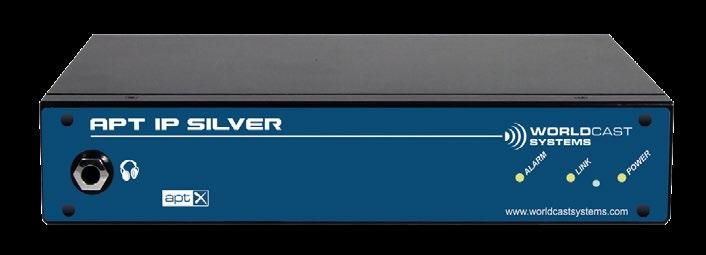

The Encoder and Decoder include networking features such as VLAN tagging, NAT traversal and SureStream Technology to ensure IP redundancy.
The devices are suitable for individual MPX-FM feeds and multifrequency transmission and support various MPX bandwidths and formats.
“Our NTP-based Time Alignment function further enhances flexibility, allowing precise adjustment of latency for seamless program switching between transmitter frequencies. And with our intuitive ScriptEasy software, broadcasters can control and monitor devices remotely, streamlining operations and ensuring maximum efficiency.”
Info: www.worldcastsystems.com/en/c203p263/
Nautel plans to incorporate audio player and playlist functionality into its VX FM transmitter series.
“With the audio player functionality, users will be able to upload

content locally or remotely via an IP connection to make a playlist; no USB, additional cards or site visits are necessary,” it said in an announcement this spring.
“The built-in audio player can use the file playlist as an audio source and is often used as an audio loss backup. This capability is slated for availability later this year.”
The VX line was introduced in 2022 and began shipping last year. It is available in power levels from 150 watts to 6 kW. The company said shipments are approaching 1,000 units.
Info: www.nautel.com/products/fm-transmitters/vx-series/


The new Optimod Trio from Orban can be user-configured as an AM processor, an FM processor or as an HD Radio/DAB+/streaming audio processor without the need to download firmware. In the HD Mode, Trio is even suitable for TV audio processing.
It uses Orban two-band intelligent AGC and five-band compressionlimiting. The company describes it as a no-compromise processor that station engineers can travel with and use as a backup or full-time main processor.
It has dual redundant power supplies, optional AoIP support, 2 GB of non-volatile memory for audio storage and playback along with dual Nielsen PPM encoders. Options are via software keys and do not require hardware changes.
“The Optimod Trio is designed to address the needs of smaller broadcast markets that need high-quality, cost-effective processing for a myriad of broadcast platforms without having to have three different devices to do that,” the company says.
Info: www.orban.com/overview-optimod-trio-audio-processor
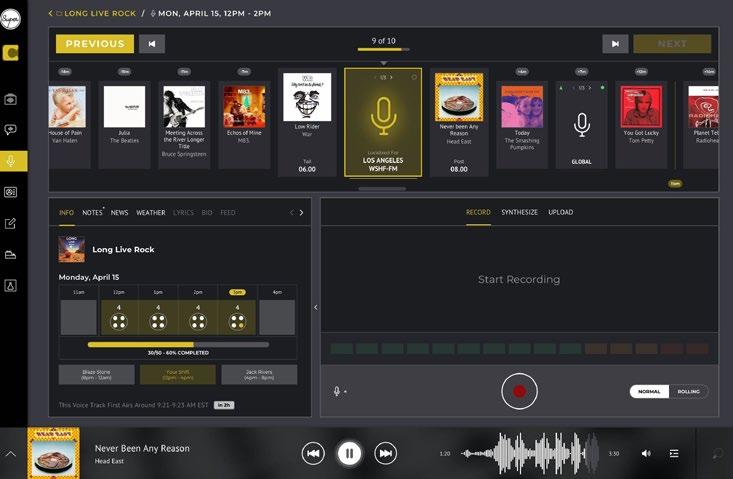
Super Hi-Fi recently released Voicetrack Fusion, describing it as a new approach to voice tracking.
It says the platform blends talent management, shift management, job assignment and voice track recording into one interface and reduces VT scheduling and production to a matter of minutes.
Voicetrack Fusion is available through the Super Hi-Fi Program Director OS. The tool offers recording, production and shift management to a browser-based interface. “The platform automatically produces all of the elements around voice tracks, so they’ll sit perfectly in the mix and always hit the post,” the company says.
Tools include voice track scheduling; variants for network or localized syndications; and automated alternates, so that if a talent misses an assigned voice track, the system will select the items and auto generate a reduced, voice-free alternate segue.
“VoiceTrack Fusion allows managers to schedule DJ shifts, automatically generate voice track assignments, deliver job notifications via text and email, and monitor job progress for all On-Air Talent with ease.”
Info: www.superhifi.com/products/voicetrack-fusion
Audio-Technica has launched a USB audio mixer for streaming and similar applications. It is the AT-UMX3, retailing for $149 and highlighted for its simplicity of operation.
“This all-in-one interface is equipped with one XLR / 1/4-inch microphone input, two line inputs for guitar and keyboard, and a headphone jack for monitoring,” the company said.
“The AT-UMX3’s loopback function allows users to mix mic and instrument audio with sound from their computer into a single stream and be confident their audience will hear the same mix. When loopback is turned on, it is possible to play background music while streaming or to stream game sounds and voices at the same time.”
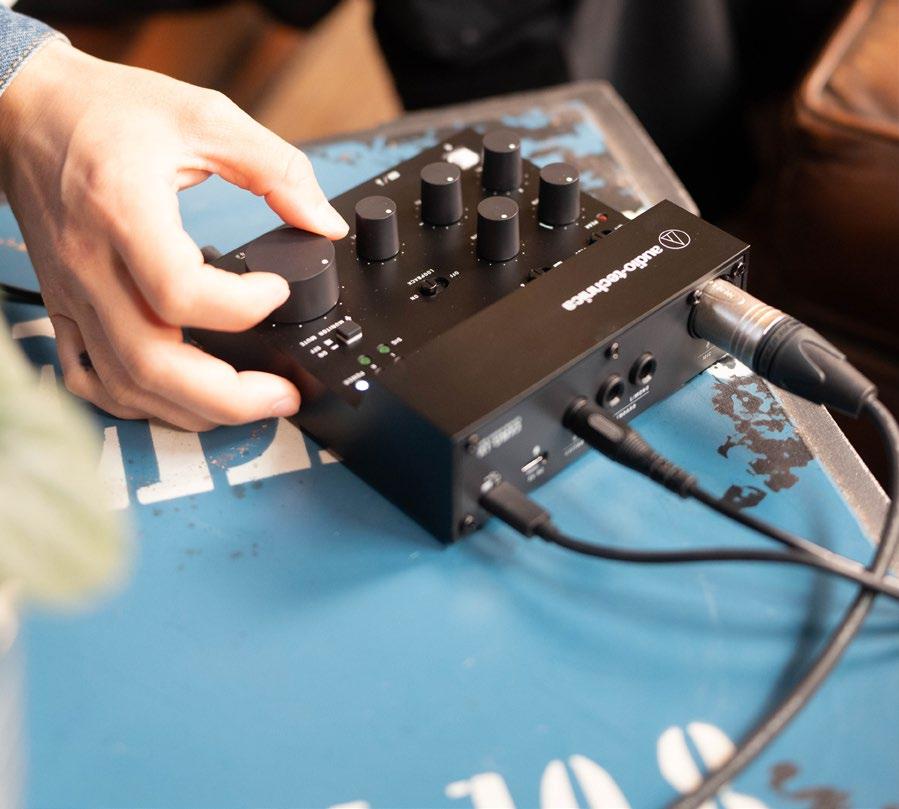
Features include a microphone mute function and another function to mute mic audio only in the mix sent to connected headphones.
The A/D converter provides resolution up to 24-bit/192 kHz. A-T says the mixer has a noise-resistant design to prevent pickup of unwanted electronic noise from smartphones, Wi-Fi routers and other sources.
Additional features include Neutrik XLR/6.3 mm (1/4-inch) combo microphone jack, 48 V phantom power supply, a Hi-Z input jack for an electric guitar and a stereo input for a keyboard. The system is compatible with Windows, macOS, iOS, iPadOS and Android OS as well as livestreaming apps and online chat apps.
The mixer comes with a USB cable (USB Type-C/USB Type-A) and a USB conversion adapter (USB Type-A/USB Type-C). It connects to a computer or mobile device with no special driver installation.
Info: www.audio-technica.com/en-us/at-umx3
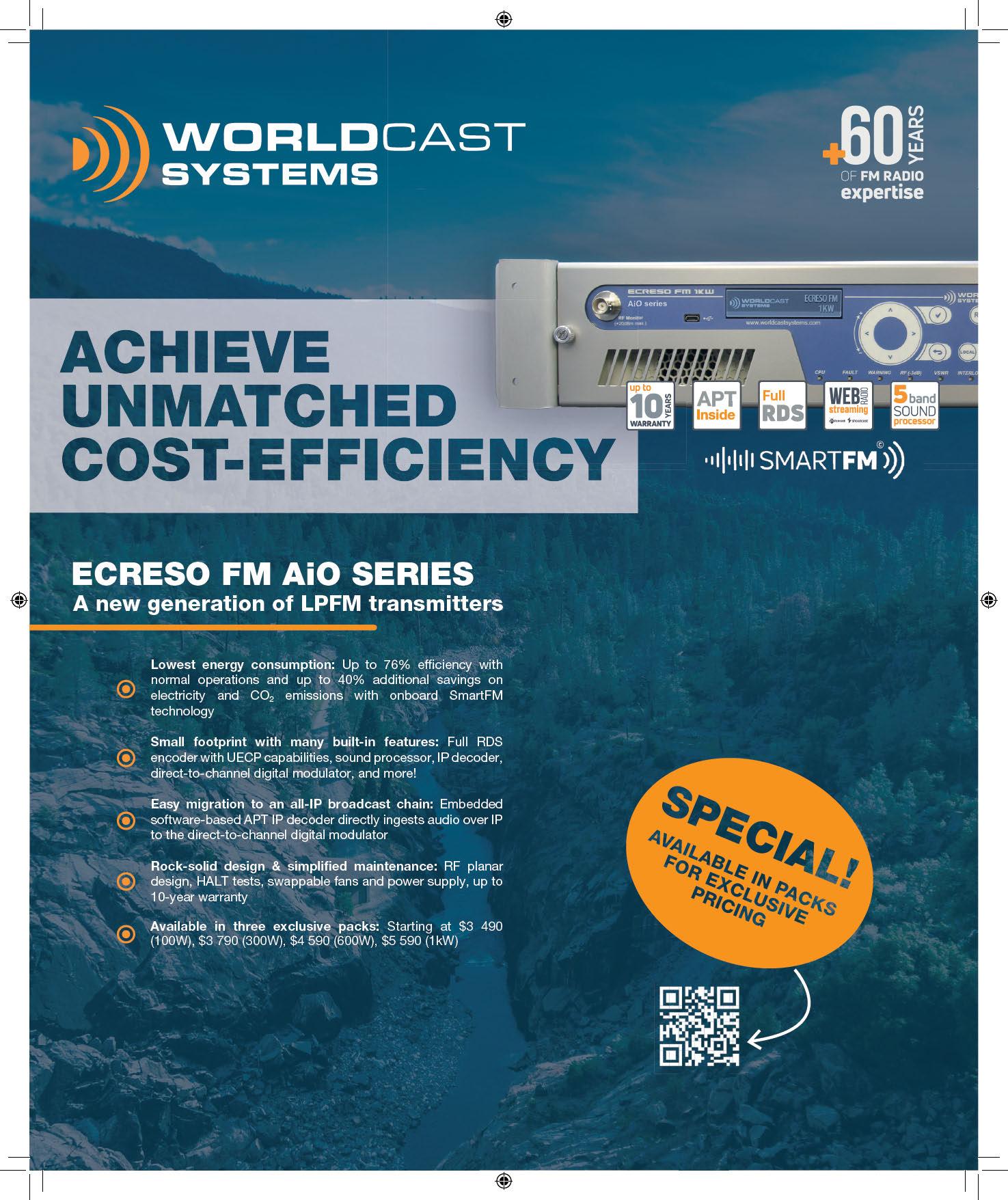

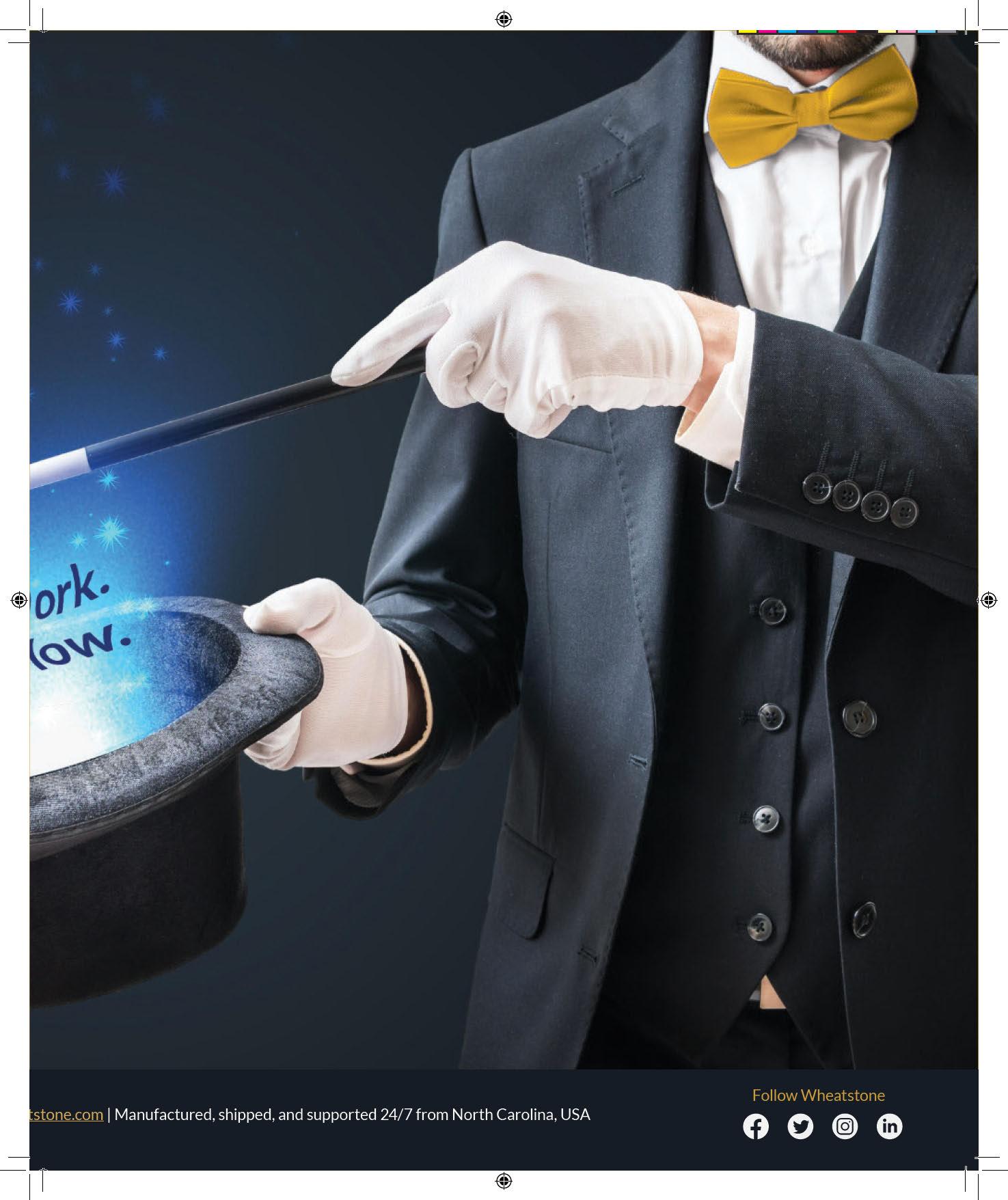

Writer Paul McLane Editor in Chief
These facilities serve WBEZ(FM) and the Chicago Sun-Times
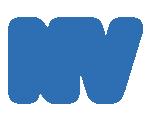

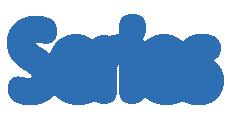


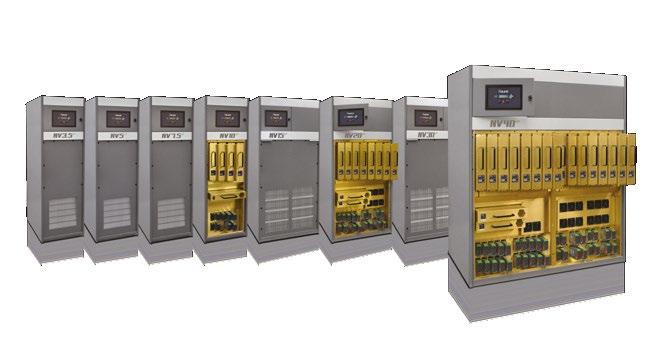

Chicago Public Media, non-profit parent of WBEZ(FM) and (since 2022) of the Chicago Sun-Times, has its studios and offices at Navy Pier, a 3,300-foot-long attraction on the shoreline of Lake Michigan, featuring a 196foot Ferris wheel and Chicago’s skyline as the backdrop. CPM has a 99-year lease that started in 1995.

The organization, which employs around 300 people, recently completed a rebuild of its entire studio core. We asked Vice President of Technology and Operations Stephen Wright to fill us in.
Can you describe this project?
Stephen Wright: These studios serve both WBEZ and the Chicago Sun-Times. Our broadcast signals cover Chicago as well as Kankakee and Morris in Illinois, and northwest Indiana. We also manage the Illinois Statehouse program for Illinois Public Radio; our reporters provide statewide coverage through public radio affiliates throughout the state.
We built four two-person edit booths, two anchor studios, a talk studio, a backup air/production studio, a dedicated production studio, an audio/video studio and a music on-air studio. We also updated our performance and recording studio.
The original main broadcast studios dated back to 1995.

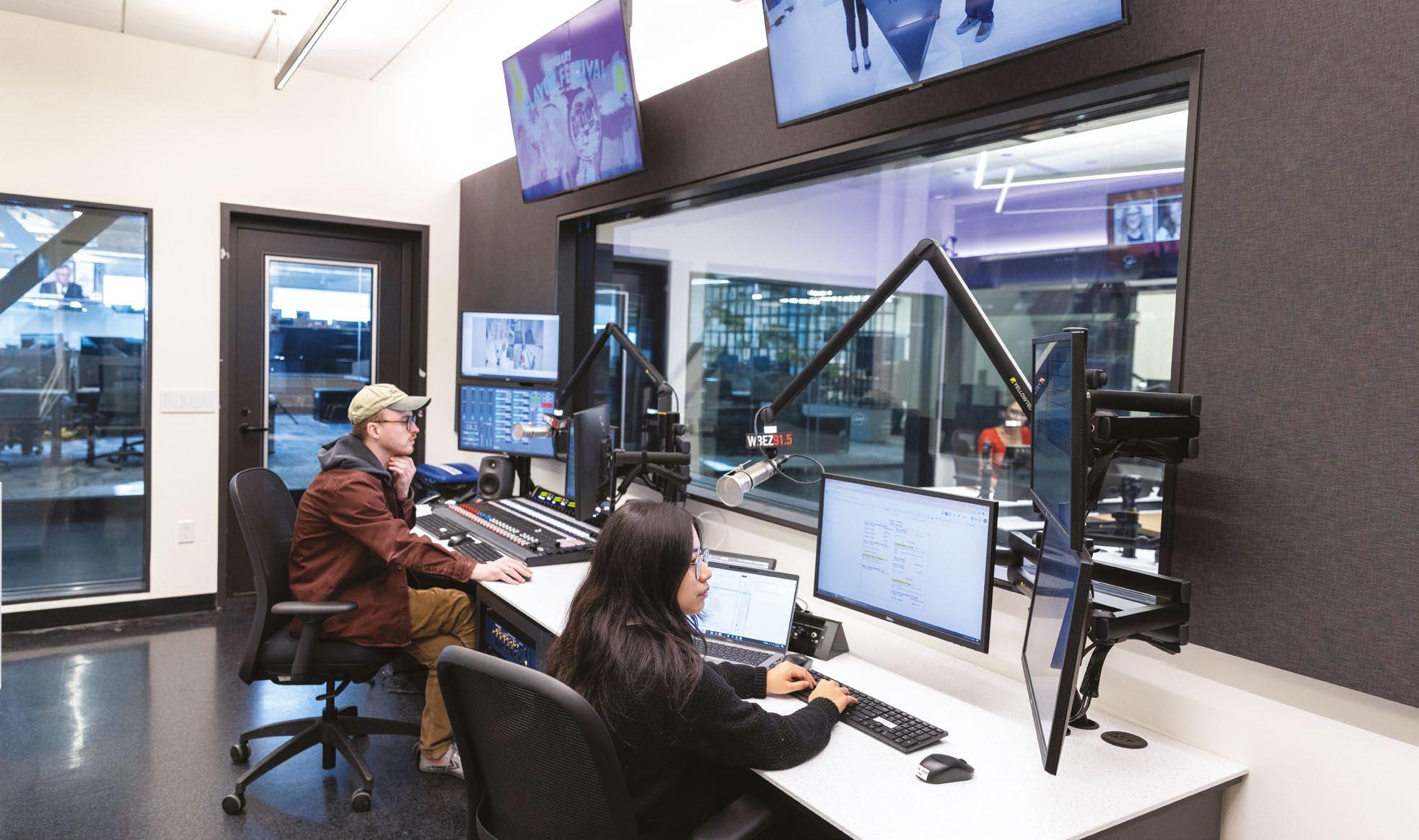
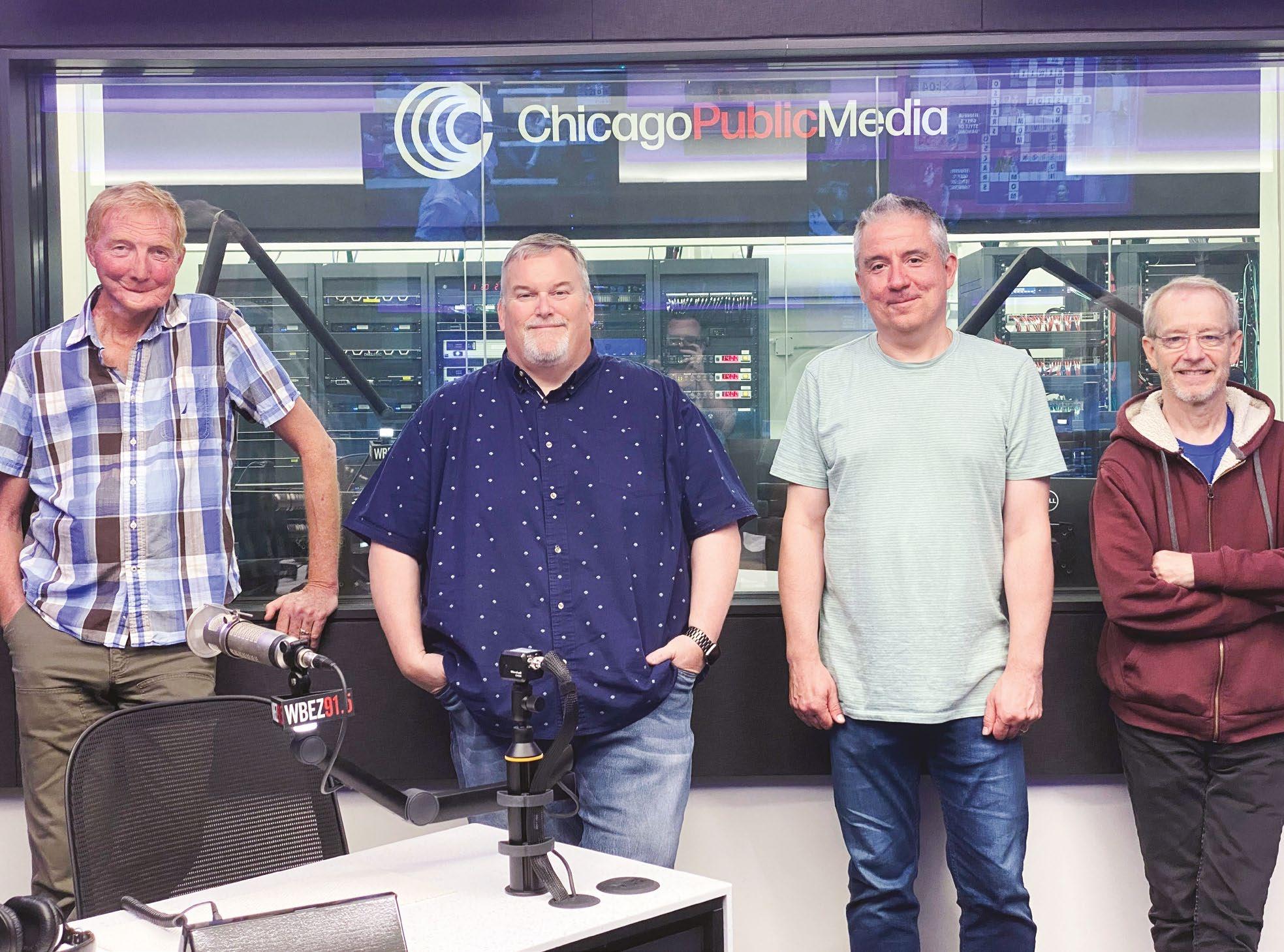
We wanted to transform them into content creation spaces that incorporate video components for both live and recorded content while using the flexibility that comes with audio over IP.
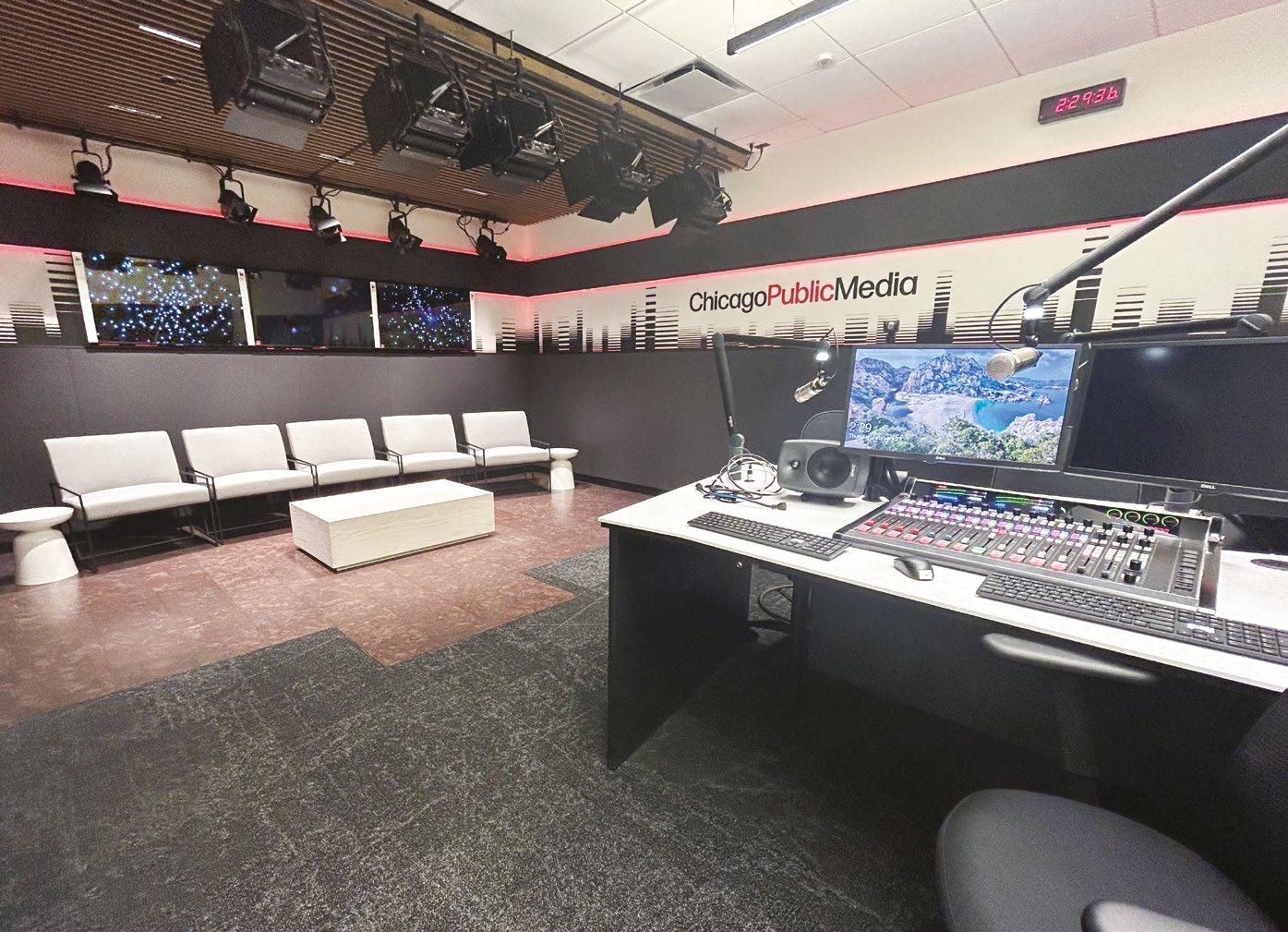
Who led the planning and when was this work done?
Wright: I was the project lead, working with Bill Prendergast, director of RF transmission and maintenance.
Initial conversations started with V Three Studios, an architecture and design firm based in St. Louis, in the spring of 2022. Kurt Kerns and his team started with a rough sketch that Bill and I put together to utilize the existing floor space.
We formed a committee with staff representation of all the current broadcast units and met with V3. The meetings set the foundation of the design incorporating needs of the various units. With architectural plans completed, we worked with Skender Construction to form a budget and lock in a timeframe for the work.
Andy Cole at SCMS provided our Wheatstone LXE consoles and handled design and build of our custom furniture. SCMS also provided a video solution through Insoft’s HDV Mixer. The studio integrator was Inrush Broadcast Services, who provided rack elevations and Wheatstone programming.
Our goal was to not start demolition until every subcontractor had materials on hand ready to transition from demolition to construction without a pause. The tighter timeline provided significant savings. We continued
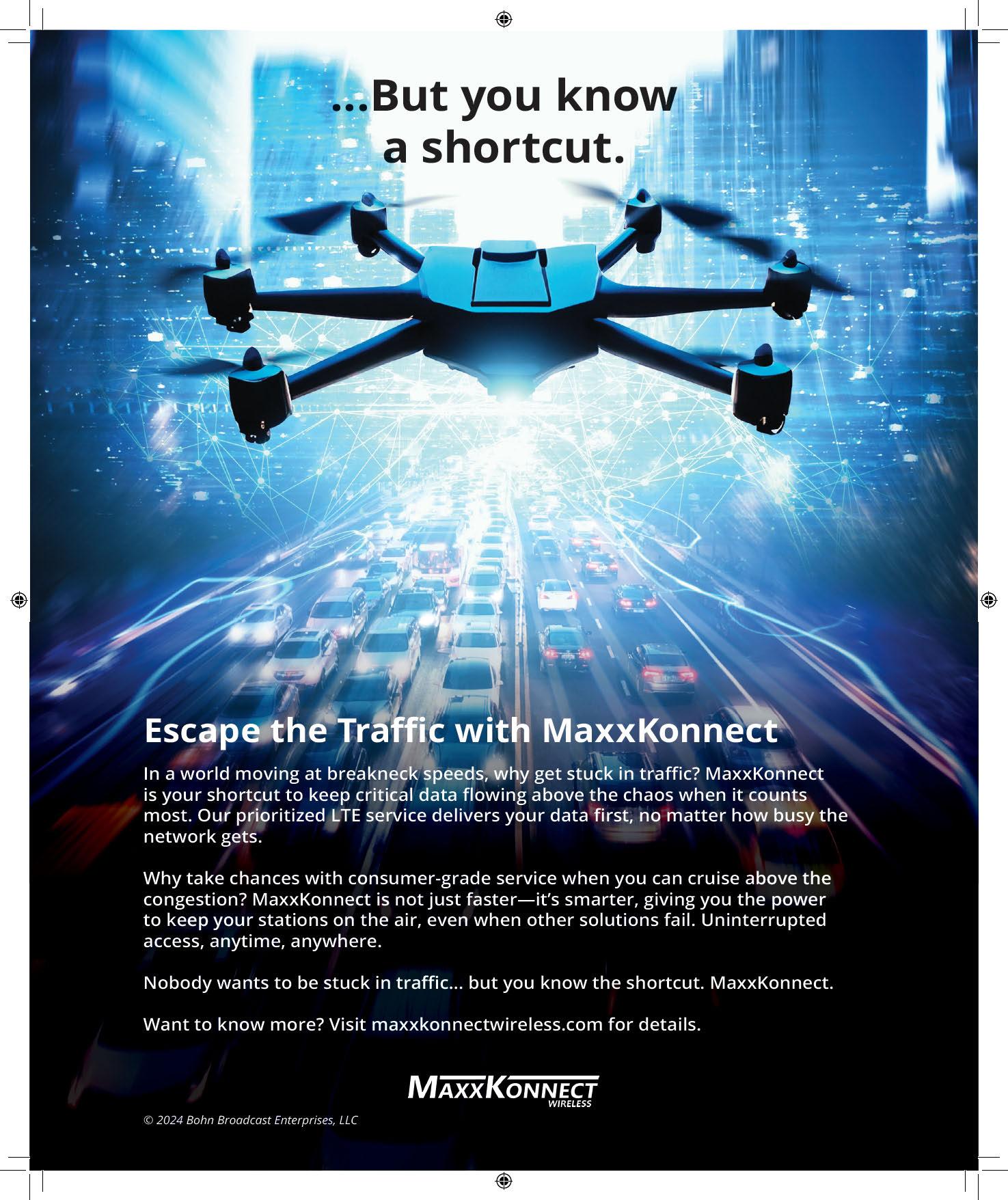
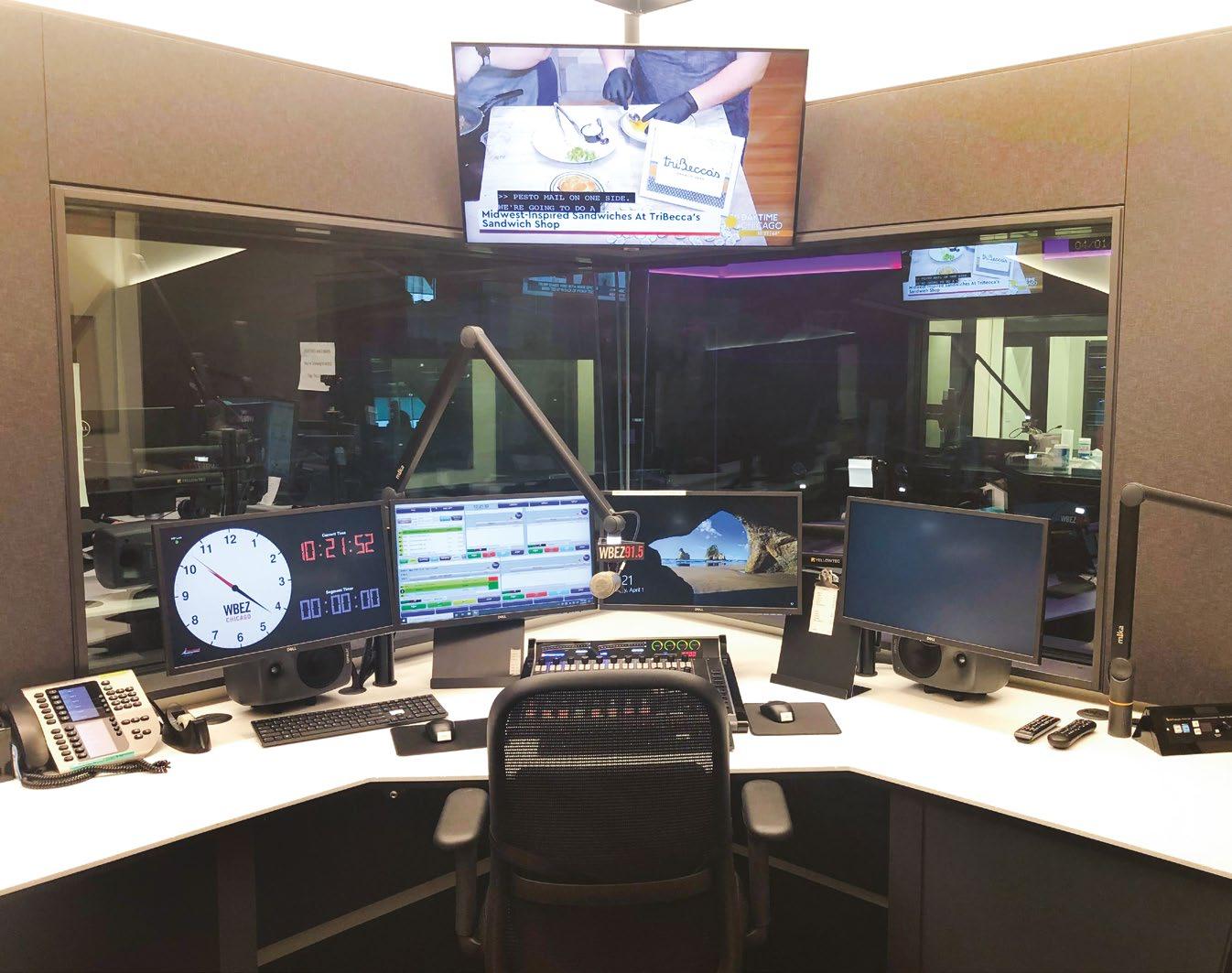
to broadcast from our facilities utilizing two temporary studios while the renovation was underway. Construction began in July of 2023 and wrapped up in March of this year.
Describe the design aesthetic approach.
Wright: Our general office space had been remodeled in 2018, so V3 incorporated numerous features in the studio core design to highlight existing finishes and colors. In the end, the goal was to bring the spaces together through the detailed design. Adding numerous large windows now allows an abundance of natural light into the studios and connects that space to our newsroom and offices.
“ We wanted to transform them into content creation spaces that incorporate video components for both live and recorded content while using the flexibility that comes with audio over IP. ”
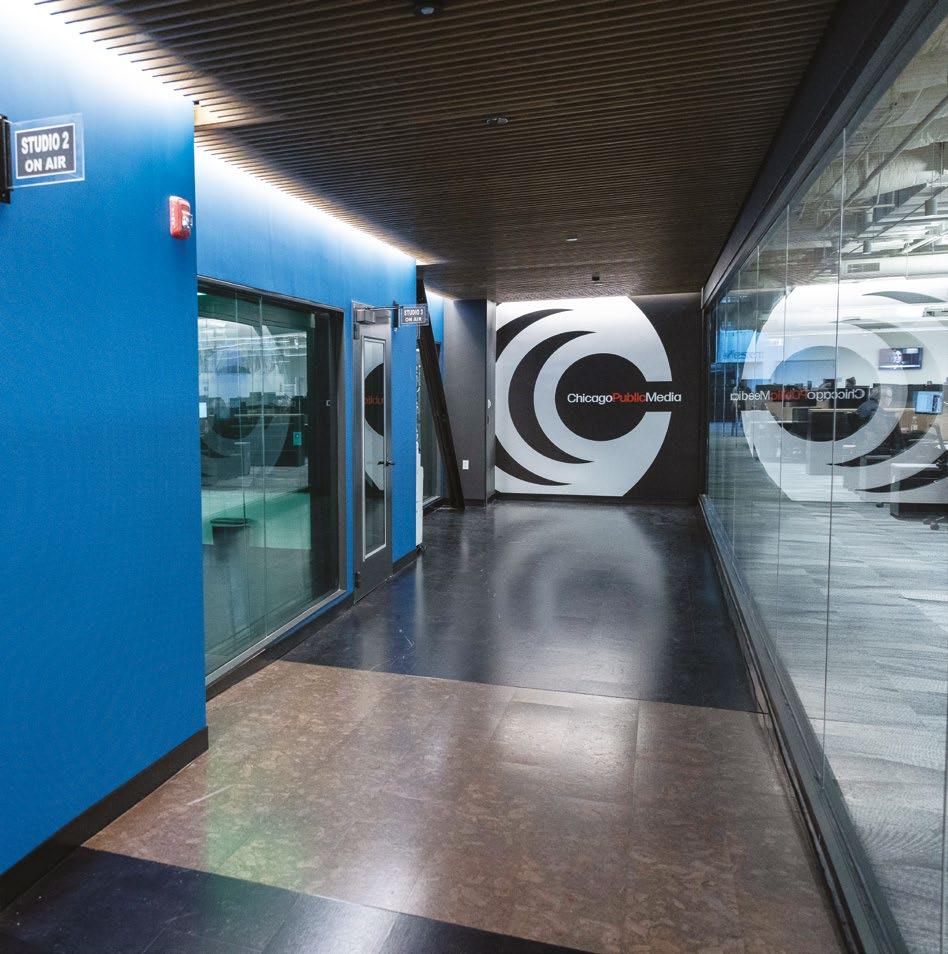
Why is this project special?
Wright: This buildout is truly from scratch. We remained on the air using the two temporary studios on different floors than our current studios. They were built mixing new equipment from Wheatstone and existing furniture we reallocated. At that point, we removed every connection from our Terminal Operations Center to every studio, severing the tie to our existing broadcast chain. This allowed demolition to proceed on the studio core without fear that we would disrupt current on-air work. The first space that was built was our new TOC and master control studio. An entirely new infrastructure branched out from that space.
Any interesting details to share?
Wright: Our performance/recording studio is home to a Steinway Model D Full Concert Grand Piano, one of two in the city. Part of the remodeling project was to create a pathway from the studio to a storage room so we can move the piano for safekeeping when it’s not in use. Working with our architects and lining up two double doors across the hall from each other shouldn’t be a difficult task, but hidden steel columns in the walls and keeping the integrity of our studio space were a bit of a challenge.
Skender also built an insulated temporary wall around the studio core, to keep dust and noise to a minimum in our office space.
What else should we know?
Wright: A truly collaborative effort. We engaged as many staff members as we could along the way, so everyone felt a sense of ownership to the project. As the project moved along, we posted pictures from demolition to the new buildout in our internal channels so we could keep the engagement with our teams.
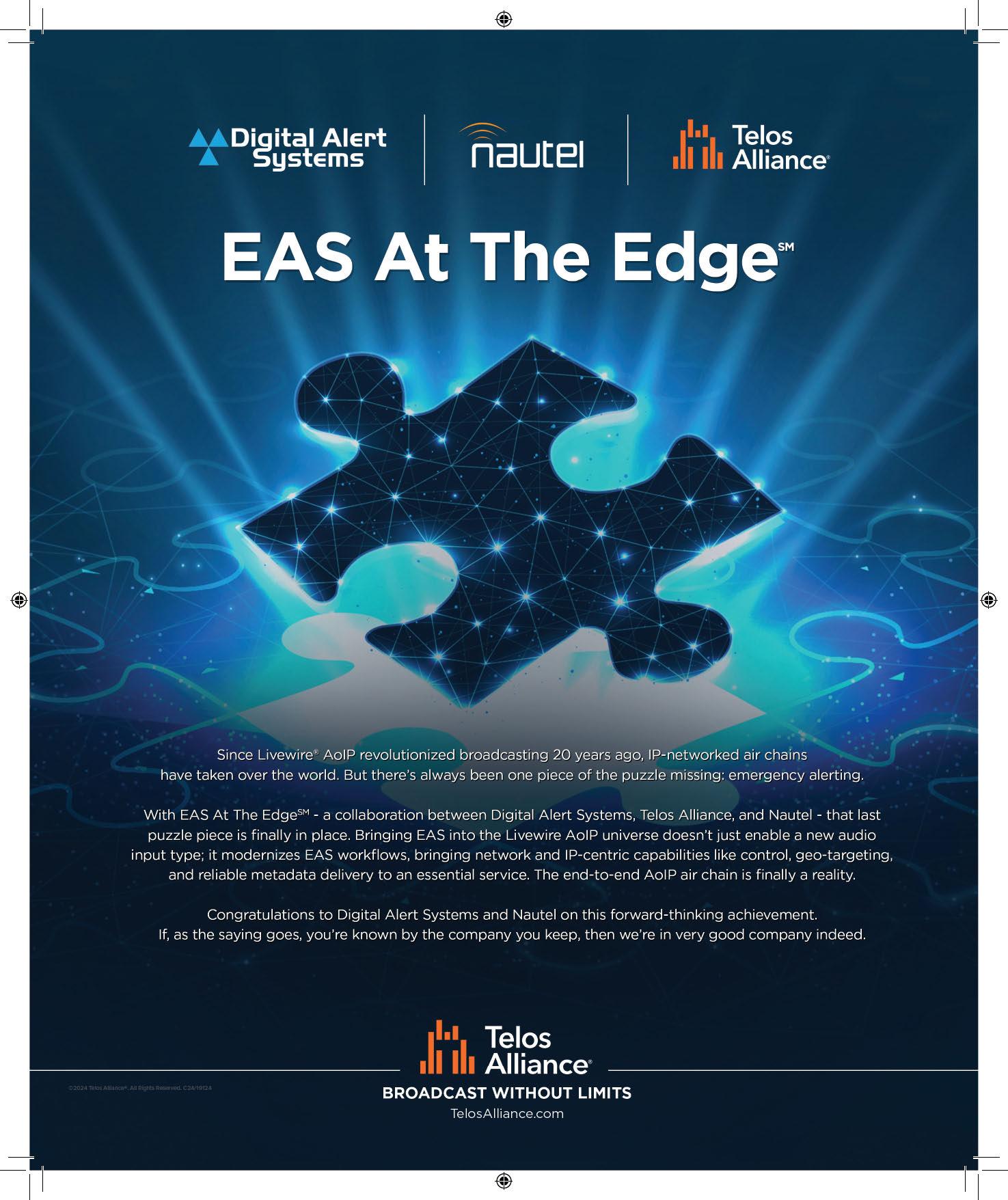

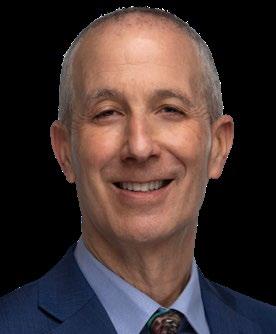
Help your clients as well as your own station to take advantage of this popular tool Mark Lapidus
Quick: What does the “QR” stand for in the phrase “QR code?”
C’mon, I gave you a hint!
It stands for “quick response.” It was created in 1994 by a Denso Wave employee named Masahiro Hara who had the idea while playing “Go.”
He realized a grid system could hold much more info in a single code and could also be read from multiple directions, angles, and distances — thereby speeding up
the manufacturing process of Toyota vehicles. Now, QR codes in China are used for everything from business cards to mobile payments.
The adoption of QR codes in the United States has been anything but quick, but during the pandemic — when people didn’t want to touch cash or push buttons on a card reader — the QR code became a hit. According to Forbes, QR scans reached 26 million in 2023, a 433% increase compared to two years earlier.
In 2023, Nielsen Audio stated that listener engagement
through QR codes increased by 35%. Nielsen also says that QR codes can increase brand recall by 30% in television shows and consumer engagement for TV commercials by as much as 30%.
This is relevant to you if you’re creating a TV spot to advertise your station, whether on TV, digital pre-roll or instream video; your commercial should include a QR code to further promote the station.
So, how can radio stations benefit from QR codes?
Let’s start with our clients, especially in small and medium markets. In-store QR codes — on a poster or end display with a station logo — can drive consumers either to loyal listener deals at the store or to a one-time discount not connected to a club.
Got a station e-letter? Each one should contain a QR code with a special offer for something free at a participating sponsor!
On your social media channels and website, QR codes are the fastest way to drive ticket sales to events and concerts, to drive listening to one your podcasts, or to simply communicate detailed information about any topic you choose. For example, you can offer your listeners more information about recently reviewed restaurants in your city; or if you’re running a radio marathon to raise money
for a local hospital, a QR code could be scanned to drive donations.
Do you have a radio station app that live-streams? A QR code is a great way to get people to download the app from Google Play or the App Store. So whenever you do remotes or appearances, make sure to display your station app’s QR code prominently to increase those downloads.
Maybe someday RDS will carry QR codes on car radios, or there’ll be another direct-to-car delivery method. Imagine if every song, promo and spot airing carried a QR code. Passengers in cars could respond in the moment, further demonstrating what we’ve always known: Radio advertising delivers!
“On your social media channels and website, QR codes are the fastest way to drive ticket sales to events and concerts.
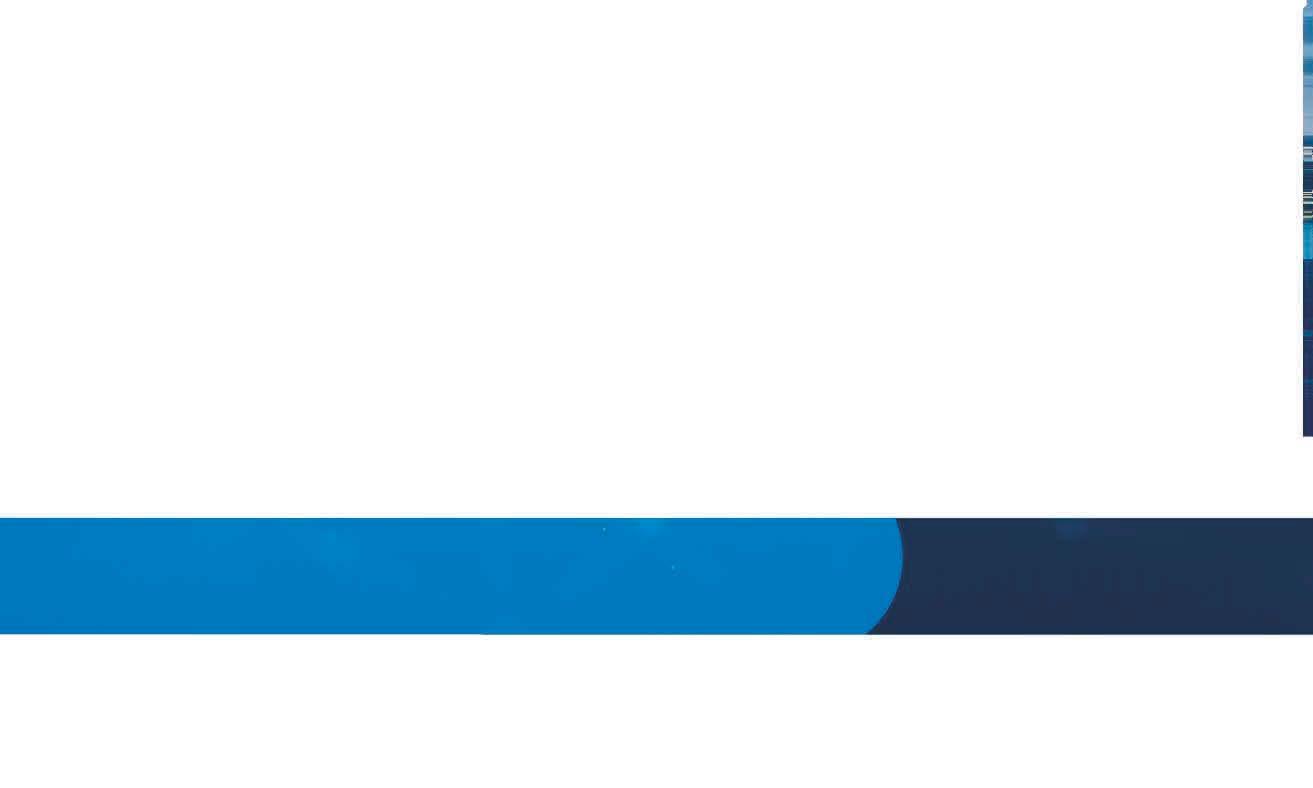
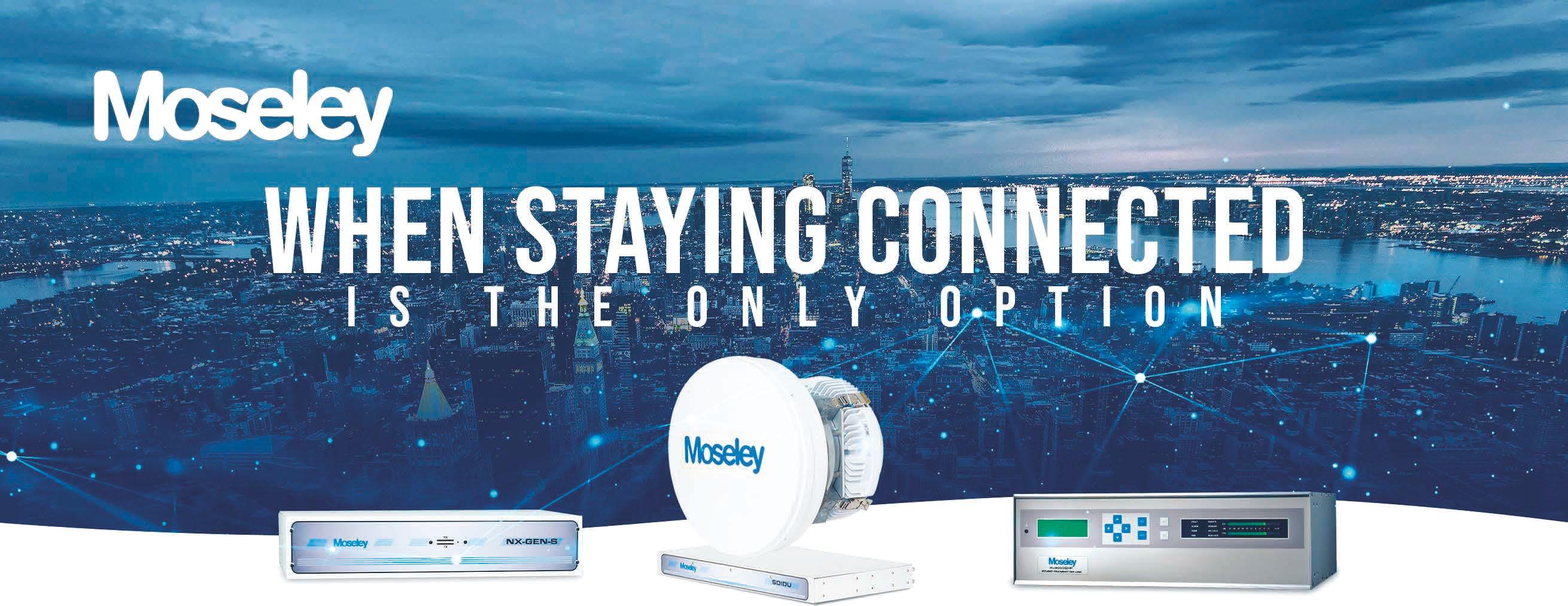
Writer
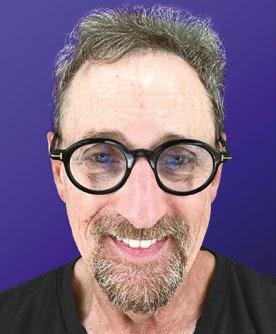
Ken Deutsch
The
Lowell Homburger, who marks 61 years in the broadcasting business this summer, says his first paying gig was “doing the all-night show at a daytime radio station.”
While that sounds like a joke, he actually did the 6 p.m. to sign-off shift on WXOX(AM) in Bay City, Mich. But like many radio people, Homburger had entered the world of media earlier. In 1956 he set up his own homemade station, called WBKS(AM) for “Bay City Ken Simons,” a reference to a neighborhood friend.
“Ken Simons’ father was director of communication for the local sheriff’s department, and he built a small radio transmitter for us that covered half of our community with a 200-foot antenna,” said Homburger.
“We ran our operation after school and we never interfered with other stations. My parents were in the jewelry business, but I never had the passion to look at that as a career. Speaking into a microphone and playing records seemed more fun to me.
“There were a lot of ways for boys to have fun in sports and other activities then, and I think having our own radio station kept us busy and out of trouble, while creating sort of a ‘You do that for fun?’ image among our friends.”
Homburger broadcast parades and other events from various locations by using local payphones, a microphone and a small mixer.
“We even had a banner for our station,” he said. “Local radio stations did a lot of remotes back then, and we couldn’t see why ours should be any different.”
When Simons, Homburger and their friend Russ McRae used the phone line at Simons’ house, they would occasionally run into complications.
“They had a party line and sometimes another person would try to make a call and we had to ask them to be patient because we were on the radio,” Homburger said.
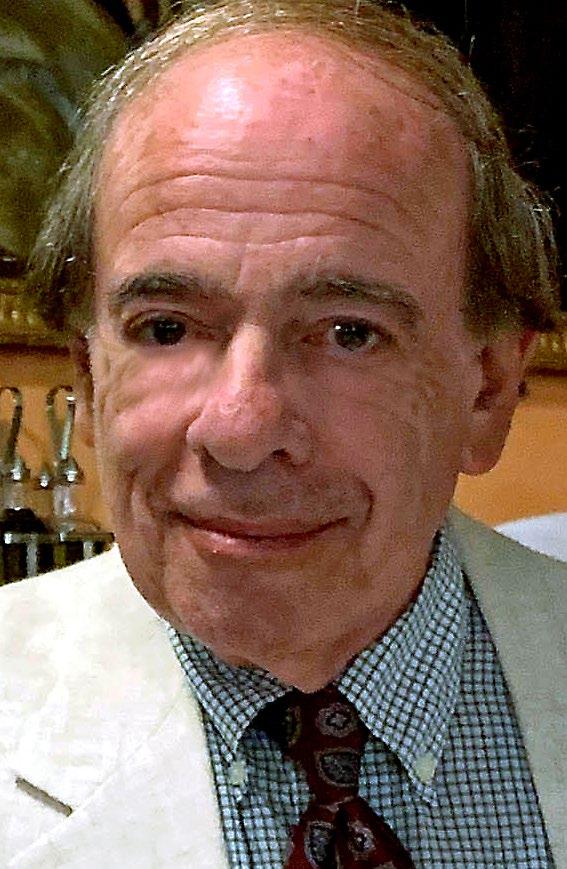
When Homburger graduated to commercial radio, he held just about every position one could hold.
“That includes several summers I spent filling in at a market-leading Saginaw station for everyone on vacation.
I learned to be a receptionist, prepare logs, write copy and handle all air shifts,” he said. “And I haven’t even mentioned filling in for the news and sports director.”




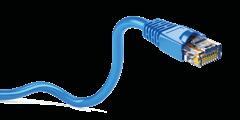
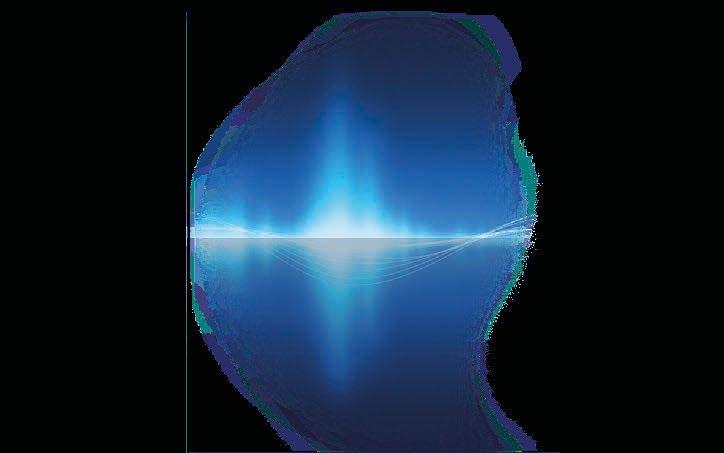
“We even took a major network news feed right off the air from a distant FM station because no one listened to FM in the 1950s. We’d get discarded teletype stories from one of the radio news directors downtown who admired our desire to imitate the big guys. By the time we got it, the news was a little stale — but we had all the feature material we could handle.”
When Homburger started out, radio studio equipment was dominated by brand names like Gates, Ampex, Tapecaster and RCA. He marvels at how computer technology has changed the broadcast airchain.
“The sheer invention of today’s modern studios, without those famous logo faceplates … Who would have thought
then that there could be a radio studio without any tape, without any records, and without any cartridge machines?
On my first few weeks on the air, I thought cartridges were just the greatest invention.”
After years on the air, doing sales and sitting in the ownership seat at a number of stations in Saginaw-Bay City and Midland, he headed south, purchasing a lastplace “beautiful music” FM station and AM simulcast in Phoenix, Ariz.
“I got to know Ernie Winn at TM pretty well over the years, and in 1977 ‘K104 FM’ became the first station in the country to launch TM’s ‘Beautiful Rock’ format. It was essentially a soft rocker. With only one other station in Phoenix with a similar sound, we became an overnight success,” he said.
“I was fortunate to have Phil Barry Baykian as my PD, and he did an awesome job. On the AM side, we duplicated the fun and excitement of Nationwide’s WGAR in Cleveland. We imported Phil Gardner, a mainstay in Cleveland, and had ‘Crazy Dave Otto’ as our morning guy, his first major-market job. He went on to a huge career success in Denver radio.
“The staffs of K104 and KQXE were such a tight bunch of pros. It has been 45 years since we all worked together and to this day, every few years they get together in Phoenix for a dinner and to celebrate the exciting times that radio used to provide to dedicated-radio-in-blood types.”
“ My parents were in the jewelry business, but I never had the passion to look at that as a career. Speaking into a microphone and playing records seemed more fun to me.
Homburger eventually retired from hands-on radio roles, except for voicing occasional spots. But he has continued to work with stations as a principal at Abernat, Roxben & Boggs, an acquisition management consulting firm in Charlotte, N.C. The staff reports that he still puts in 50hour weeks.
At first, “I helped people acquire resources and methods to get into radio. I also helped those who’d ‘had it’ with ways to get out without sacrificing their hard-earned equity,” he said.

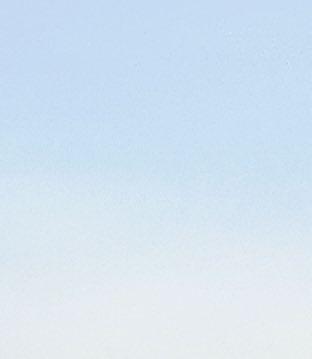
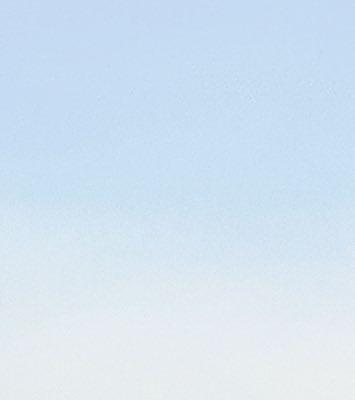



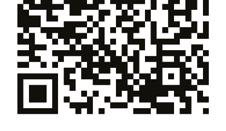
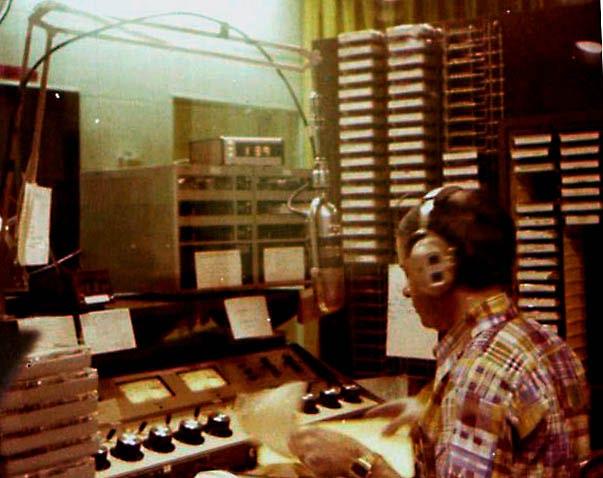
“In the last 25 years I have turned into a sort of ‘court of last resort’ for people who’ve run into difficult problems. I was able to facilitate ways and means for them to stay in the business and not lose their shirt.” Assisting AM stations in launching FM translators also has been a big part of his work.
And now Homburger is part of a team that’s building a new AM facility for EDI Media station KWRM in southern
“ Now Homburger is part of a team that’s building a new AM facility for EDI Media station KWRM in southern California. ”
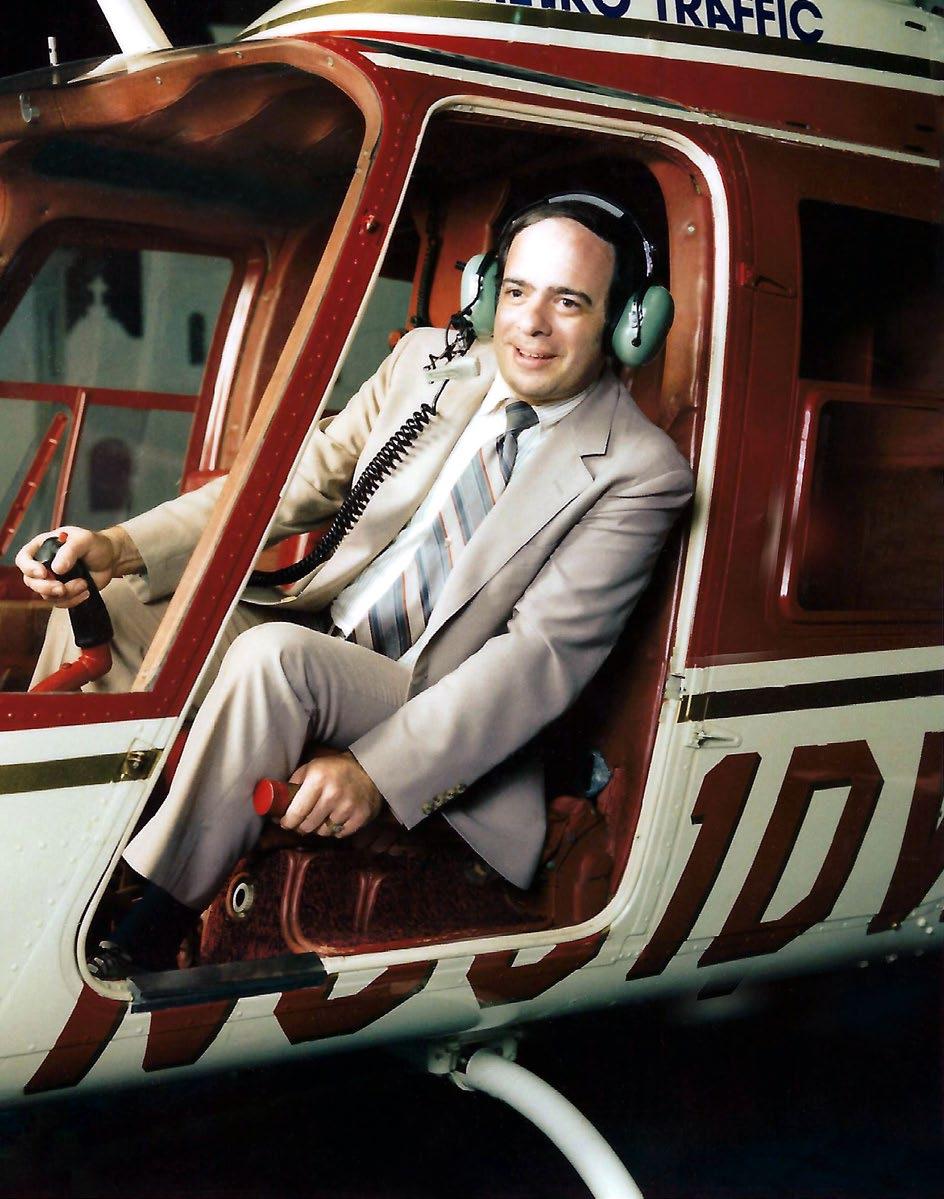
California. It will use a flared-skirt antenna developed by Ben Dawson of Hatfield & Dawson and Bobby Cox of Kintronic Labs.
“I grew up admiring the potential of AM and how easy it is to receive it on very simple radios. I felt that with the government and the FCC doing many things to advocate the preservation of AM, this could be a good example to set up a facility that is as technically progressive as the times allow and see what response it gets.”
“The reasons I’m still interested in radio are twofold,” said Homburger. “First of all, I enjoy the interaction with broadcast professionals. Secondly, I really like the exhilaration of seeing people we guide succeeding and soaring in their entrepreneurial efforts.”
Homburger recognizes the rich history of radio prior to his arrival.
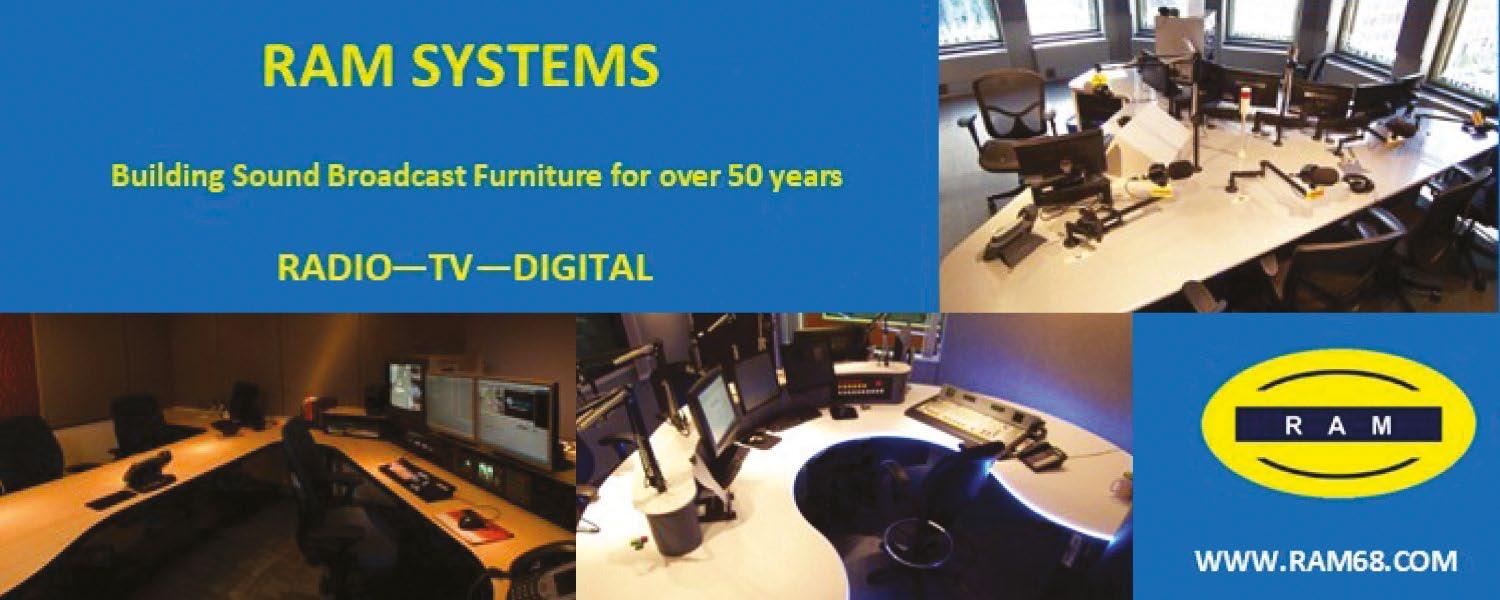
“The people who influenced me the most appreciated the magnificence of radio’s golden era in the 1930s and 1940s. They had orchestras, Art Deco buildings, large personalities, and they thought big,” said Homburger.
“Before the Telecommunications Act of 1996, these people were empire-building. They had radio in their blood and did everything by the book. They were devoted professionals who were admired community leaders.”
Homburger predicts that radio will still be an important part of people’s lives in 100 years.
“It has survived every type of competition and social trend that came and went. Where people listen and why they listen have changed, but good stations have figured out that a stream is as important as an RF signal. We are seeing a lot of big-market stations going local again. Radio will endure because stations can go through these changes and thrive. There’s no other medium that lets you drive a car while you’re being entertained. You can’t text or use social media while you drive.”
AM radio’s value could be seen when Hurricane Idalia went through Florida in 2023 and several FMs went off the air.
“When your power is out, TV is worthless too,” said Homburger, “and now I’m happy to see support in both houses of Congress for keeping AM in cars.”
He added, “The dynamics of going all-digital on AM are exciting to contemplate and give it parity with FM’s audio quality while capitalizing on AM’s longer signal range.”
But given news headlines about radio’s corporate debt problems and the decline of OTA revenue, is optimism appropriate?
“It is very simple,” he replies. “If you have something on the air that people want to hear, you will be successful. If you program ‘cookie cutter’ radio, with the only differentiation being a positioning liner or logo, you have
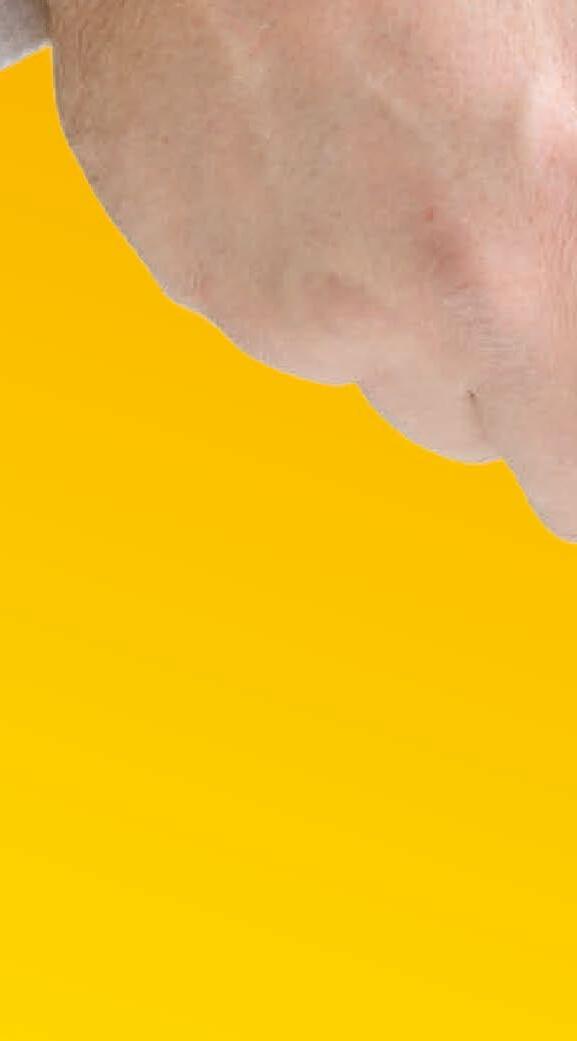



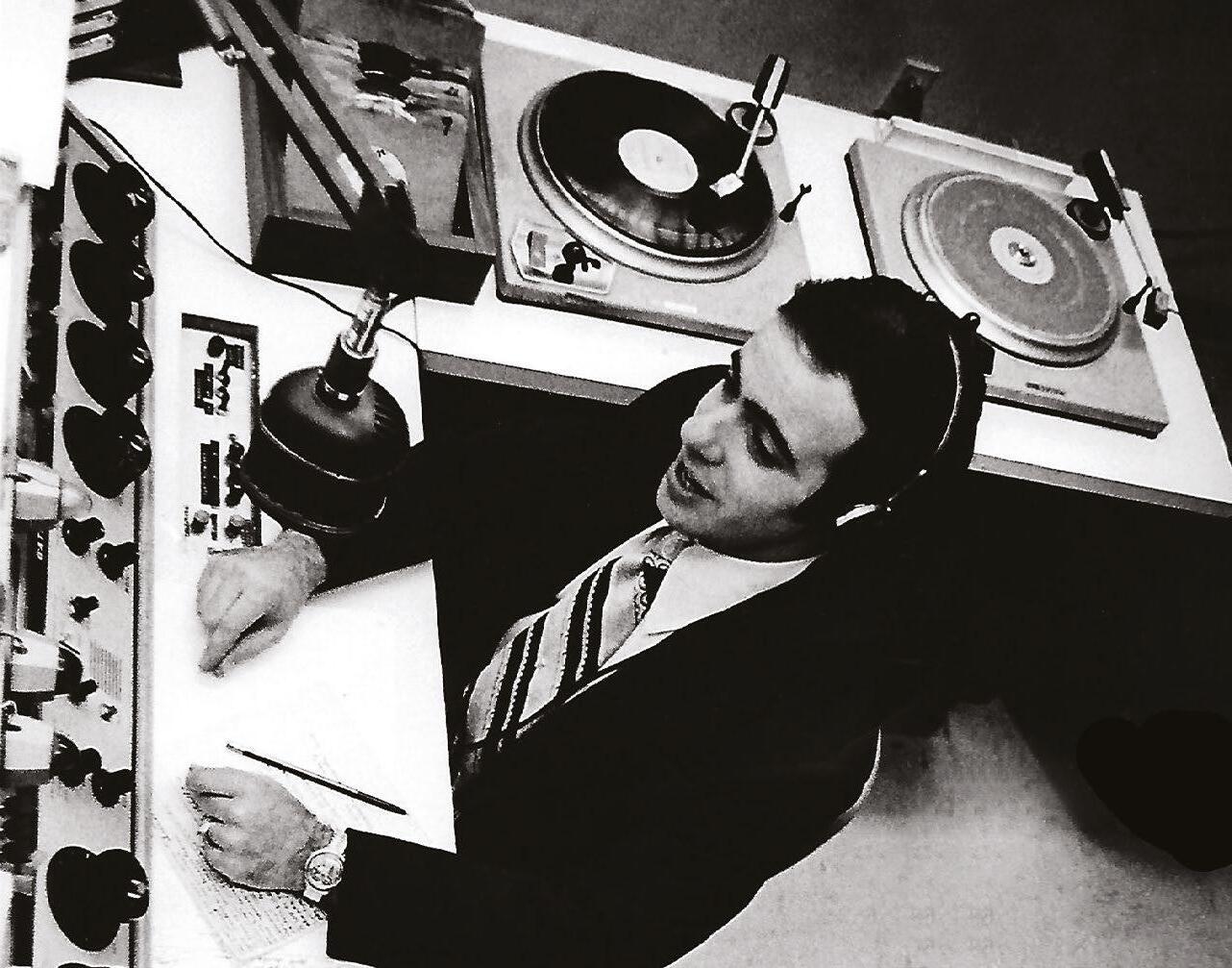
“I am just appalled at so many of the heritage 50 kW blowtorches resorting to syndicated programming rather than programming they can create that influences audiences for both the daytime groundwave crowd and the nighttime skywave audience.” He is encouraged by efforts
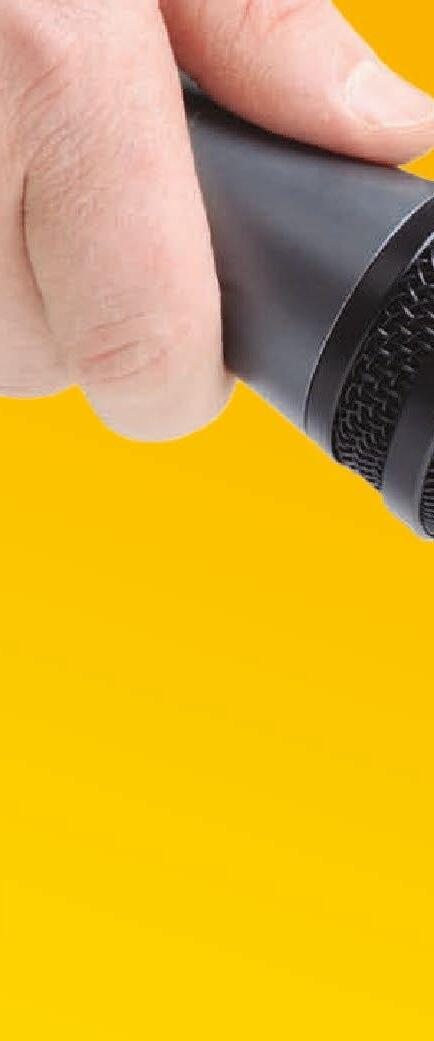
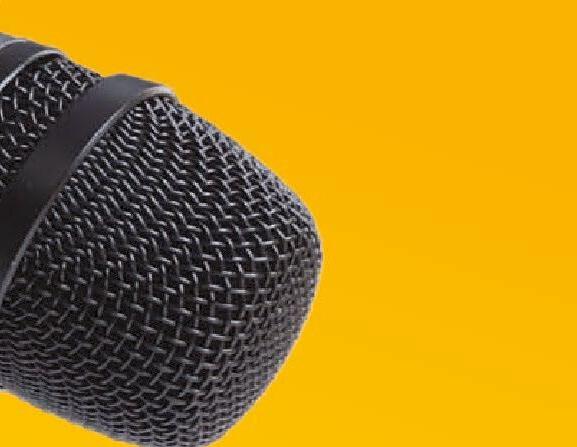




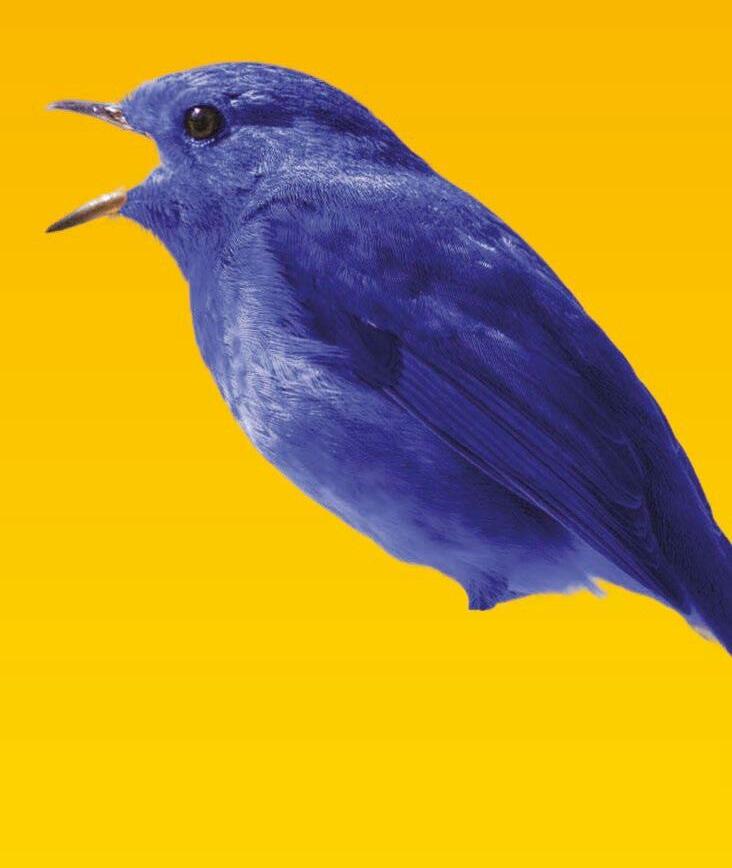



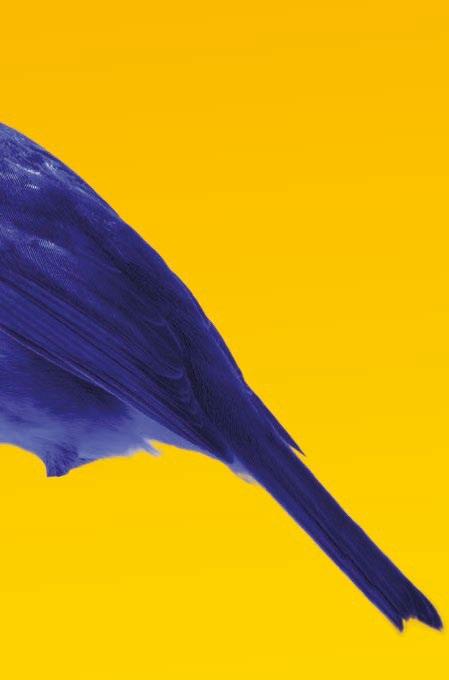





























at stations like WJR Detroit and WBT Charlotte to build more programming around local personalities.
“Being a radio ‘star’ takes work, dedication and hours to perfect your craft. If you as an owner can create an air of creativity and let your air people try out to see if they have it takes, especially if you are a smaller market owner, some will soar and others will fall flat on their face.”
He encourages prospective station buyers to work with an experienced broker. “The other caveat I offer aspiring purchasers is to look at coverage including adjacent-channel FM reception issues. And don’t buy a fiscally successful station to help retire the debt when you overpaid for other stations in your portfolio. We all know what happens when that takes place.”
In the Homburger household radio is a team effort.
“Having a wife who may not understand the business is OK, as long as she understands the passion I have as part of my radio identity,” he said. “She tolerates the occasional delayed dinner because I’m helping a client out on a project that can’t wait until tomorrow. That’s my wife Amy, and she is a major part of my success.”
Any last words for Radio World, Mr. Homburger?
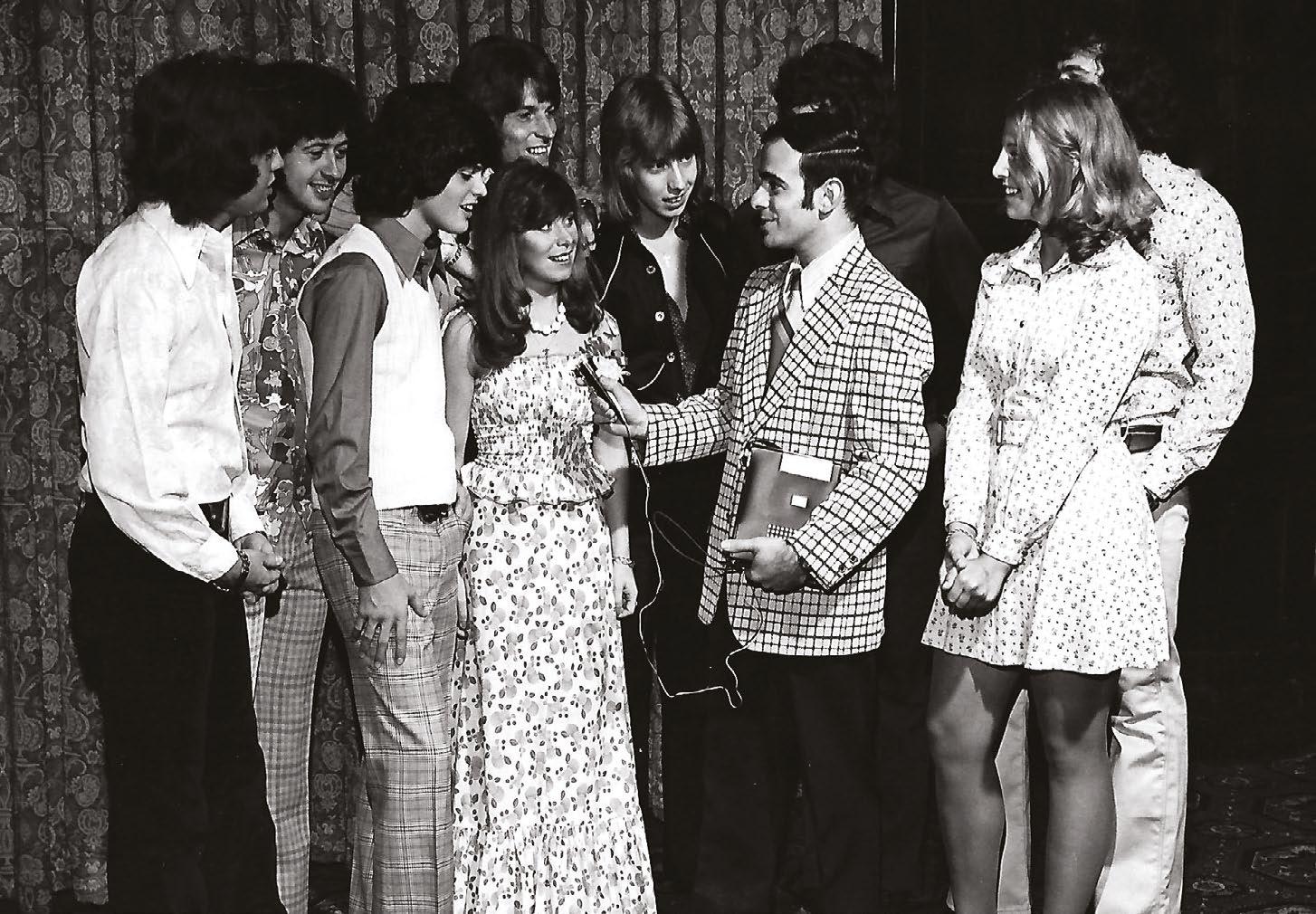
but it can be yours if you have the knowledge and take advantage of all the technical advancements the digital age has to offer. Combine that with the belief that radio is here to entertain listeners, and you can make it big in radio now and for a long time to come.”
“One bit of advice I give all our clients,” he said. “For 2024 and beyond, it’s not your father’s broadcast world anymore,
Ken Deutsch is a former disc jockey and program director, but he says if he had been any good in those positions he’d still be in radio.

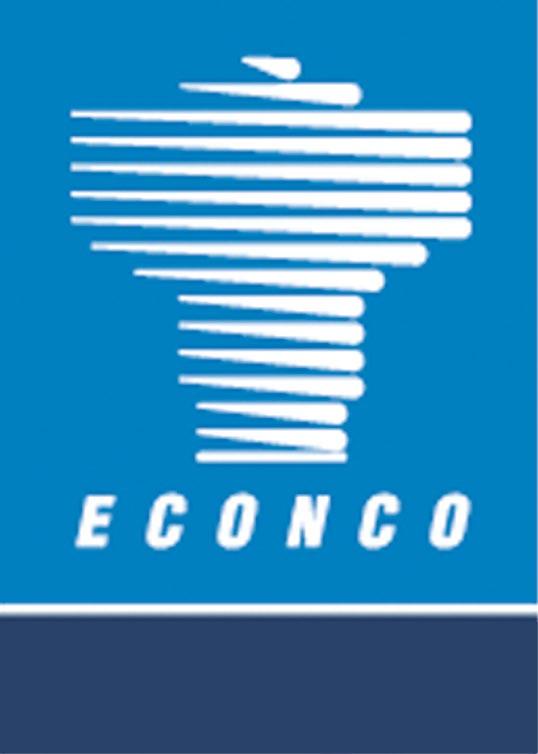
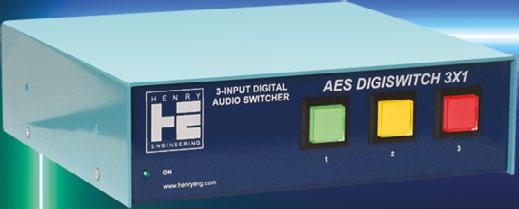



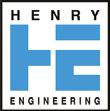
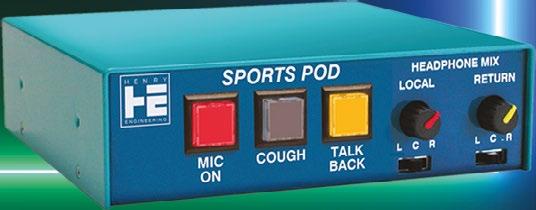

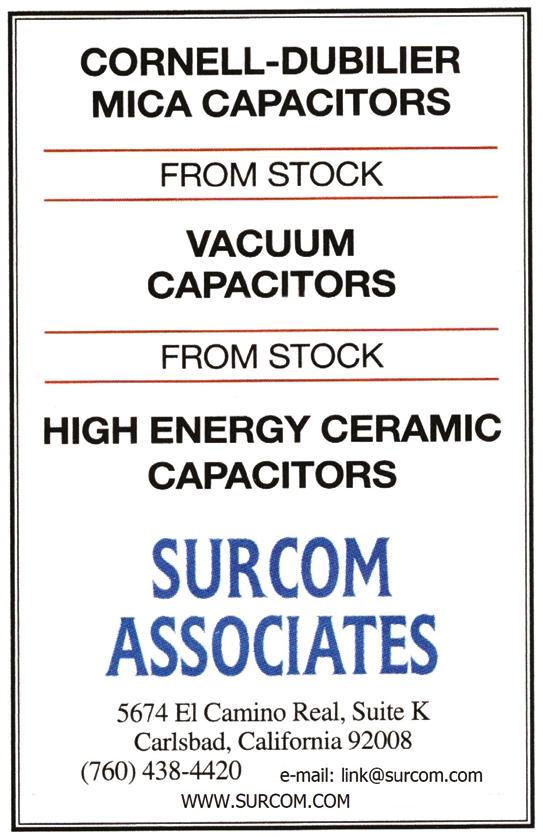

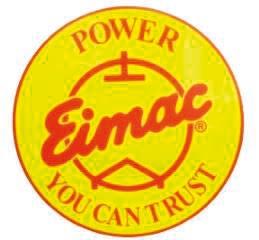




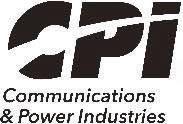

Dr. Andy Gladding
EdD, KD2RAD
The author is chief engineer and adjunct professor at WRHU Radio/Hofstra University and Chief Engineer for Salem Media of New York.
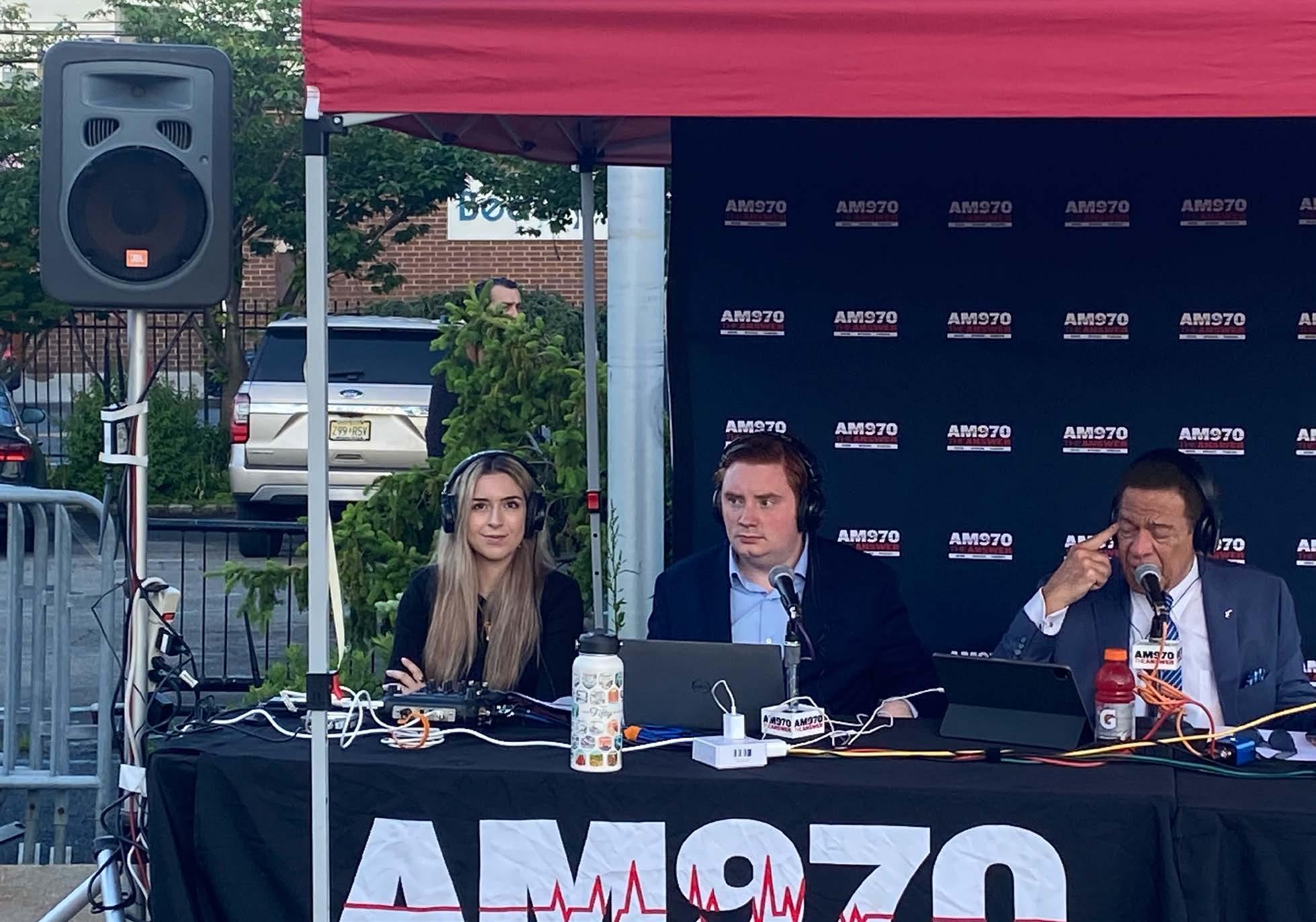
As veterans of the radio business are well aware, there is unexplainable magic attached to the work we do.
Radio has the unique ability to capture the imagination and open the theater of the mind in ways other media cannot. It was the first place where talent and audience could engage directly via telephone, making it the original social medium. And radio is free to receive, one of the last forms of mass media a consumer can access without subscription fee or paywall. Despite its amazing power and reach, the medium has been widely misunderstood — many would say mismanaged — in the 21st century. Newer forms of digital media and content delivery have moved to the forefront of consumer and advertiser perception. This has created financial issues for operators and led to a diminished outlook for the health of our beloved business, especially as companies and advertisers look for ways to court younger listeners.
A troubling trend has emerged as part of this progression.
College radio, once a bastion of alternative programming, free speech and public access to the airwaves, has seen its licenses and institutional support dwindle. Institutions are selling or turning in legacy licenses at an alarming rate. There are many factors at work, but the biggest reason seems to be a perception among some administrations that Gen-Z students do not engage with traditional broadcast radio, so operating a campus FM station has little value to the institution.
I have the good fortune to work for two fantastic broadcast organizations. As the chief engineer for Salem Media of New York, I am actively involved in maintaining studios and transmission facilities for their New York City cluster. My experience has been incredible and I consider our management team to be some of the most passionate folks in media.
I also have enjoyed a relationship spanning over two decades with WRHU Radio Hofstra University as a student and chief engineer. WRHU has an active membership of 300 students and maximizes its radio program by curating an allinclusive media training and proving ground for broadcasters.
While other schools have cut budgets and marginalized broadcast facilities, Hofstra University’s Lawrence Herbert School of Communication has invested in technology and talent to create one of the finest college radio programs in the country. The station is at the forefront of its communications facility. This investment has paid off handsomely for the school.
There is a symbiotic relationship between WRHU and other New York broadcasters like Salem, where many top students have been given the opportunity to transition from the college station into a “soft landing” within regional commercial operators. This creates a healthy pathway for
More Info
Find the author’s study at https:// tinyurl.com/rwgladding-2
halls of administration, the thought of removing young voices and community members from the FM band and ending the broadcast relationship between college and community via FM doesn’t sit well with me.
In 2018, I enrolled in Hofstra University’s EdD program, focusing on higher education leadership policy. For my research topic, I decided to examine the state of college radio FM licenses and student and administrative perceptions surrounding their impact.
I figured that if I could identify the core value centers within college radio broadcast programs, my research could provide station managers and faculty with
“This research was conducted for faculty and administrators to employ, especially if the parent institution is considering selling or ending their FM broadcast program.
students to enter the business and allows local media to give students a running start in their careers.
With this example in mind, I had a hard time accepting that other schools couldn’t see the benefits in nurturing their FM broadcast programs.
I’ve heard administrators justify the sale of FM licenses by claiming that their stations can be moved to web-only channels, which supposedly provide the same student experience while minimizing expense and risk for the university. While this argument may speak to those in the
Below WRHU students
Kevin O’Neil, Jason Eusebio, James Owens, Michael Ventrice and Ethan Adeniran prepare for the live FM broadcast mix of a rock band from the Adams Quad at Hofstra University.
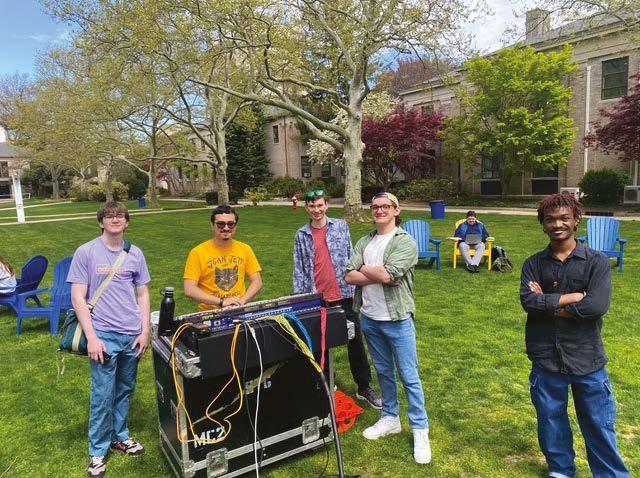
information to make a case to administrations to continue and grow these programs.
As my good friend and mentor Bud Williamson once told me, a radio station needs a group of passionate people and a community to wrap their arms around it and protect it, otherwise it is at risk for failure. I hoped that this research would be my way of wrapping my arms around every college station in the country and providing my fellow broadcasters with qualitative peerreviewed research.
My findings were gathered at three college radio stations in the tri-state area. I conducted one focus group per site each with four active station members, as well as individual interviews with two student station managers and two faculty-administrative managers.
The work produced some surprising and encouraging findings.
While many of the students surveyed did not indicate that they chose the college based on the presence of an FM station, they overwhelmingly responded that the broadcast radio program was the centerpiece of their college experience.
Students believed FM broadcasting was a critical function of the college radio program, due to the “legitimacy of performance” created by the presence of overarching FCC oversight and a perception of greater engagement with the community and their peers who found the station via FM.
The students believed the FM broadcast encouraged them to take the college radio experience more seriously and believed that the station had a direct impact on their personal growth, life experience and leadership training.
Students also responded that being part of the FM station gave them greater respect and understanding of broadcast media and that their participation had turned them into advocates and supporters of FM radio. Students at the station were also actively encouraging their peers to listen to OTA radio. They reported that despite industry perceptions, Gen-Z listenership of the FM and AM band is widely popular, because reception required no subscription or ISP service. The students pointed out that not all young people could afford “pay to play” content platforms and, in their opinion, radio provided the perfect environment to discover new material without having to strain their budgets.
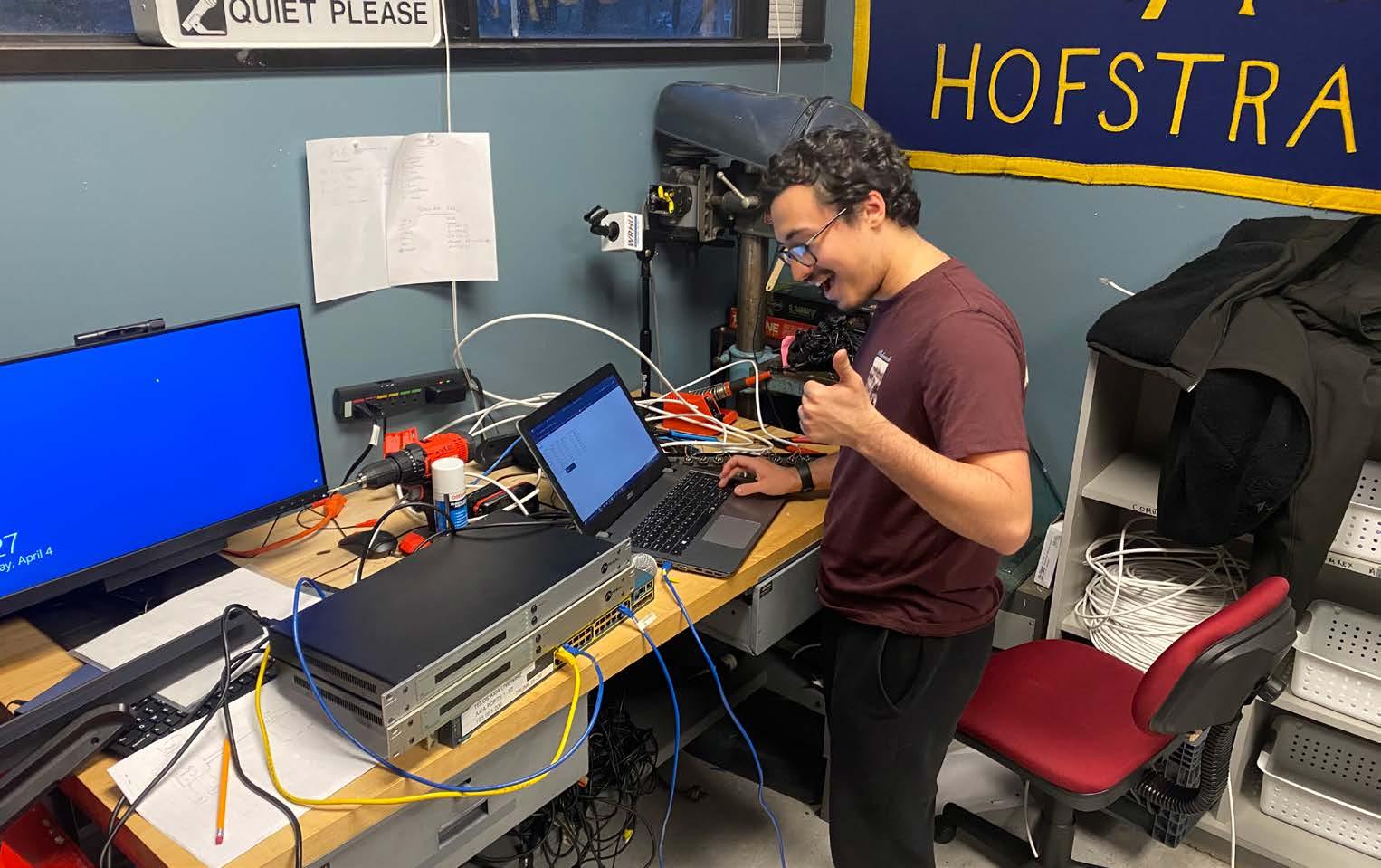
Perhaps the most interesting finding came in the form of institutional retention.
Students believed the college radio program motivated them to finish their studies at the college, as they had become attached to the station and the craft. Camaraderie at the station was helping them improve their socialization at the college and gave them a greater sense of selfconfidence, since working within the college radio framework required them to collaborate with each other and interact with the audience via FM.
As one student reported, “You never know who may be listening, so you have to sound your best.”
The faculty-administrative managers (FAMs) of the college radio stations that participated reported similar findings.
The adult managers all agreed that providing a robust, thriving radio program could have a wide array of benefits for the students. FAMs also pointed out that alliances with local and regional broadcasters and organizations like the Society of Broadcast Engineers and National Association of Broadcasters were a key component in keeping the broadcast program relevant. These partnerships provided students with employment, mentorship and leadership opportunities as well as professional networking.
Operating an FM license gave a college and a radio broadcast program prestige, as it elevated the station onto the same playing field as its commercial counterparts. In summary, I found that many Gen-Z college aged students are actively engaging with college radio terrestrial stations and learning valuable skills that enhance their academic, social and pre-professional growth.
Finally, as an engineer, I would be remiss not to point out the technical opportunities that a student-run FM broadcast facility provides. Students who engage with FM
How to submit Radio World welcomes comment on all relevant topics. Email radioworld@ futurenet.com with “Letter to the Editor” in the subject field.
broadcast technology can develop valuable STEM skills that can led them to jobs in broadcast engineering, disaster communication, civil communication, radar, cellular systems maintenance, satellite systems, electronics and other high-value career areas that are lacking in qualified candidates.
If you are a college radio faculty member or administrator, you probably know all of this. My research is for you to employ, especially if your institution is considering selling or ending its FM broadcast program.
Radio World has graciously allowed me to post a link to my research so that you can obtain a copy of the study and present it to the decisionmakers at your college campus before irreparable harm is done to the students, the college radio program and the legacy of the institution. You can find that at https://tinyurl.com/rw-gladding-2. I encourage you to use this study to ensure that your radio station enjoys a happy, healthy and long life into the 21st century. It’s up to you to wrap your arms around the station and protect it. The next generation of broadcasters is watching and listening.
“As one student reported, “You never know who may be listening, so you have to sound your best.”
